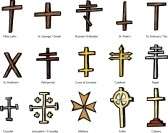 With the Hebrews one of their methods was the ‘Star of David’. Two triangles. One pointing up. The other down. This world and that domain. Both triangles interlocking = Co-existance.
With the Hebrews one of their methods was the ‘Star of David’. Two triangles. One pointing up. The other down. This world and that domain. Both triangles interlocking = Co-existance.
When [C] was included [ explained elsewhere ] it was always represented as a circle. Hence the two triangles within one circle. Russian, [sometimes Greek] Orthodox equivalent = Two horizontal bars on one vertical.
Only one of the above pictures, indicates that Primordial mound from which the beginnings / origins of an understanding may take place, which may benefit the 'individual' in relation to horizontal / vertical. Only one shows 'the fall' in its true state. Normally represented as a 'horizontal' bar. Horizontal in relation to the 'vertical'. Notice most; when two or three are depicted; are attempted to be shown within a 'pyramid' shape.
The 'Pyr' of the same word = 'fire'. That 'substance' that the 'trickster character stole'.
Side note: "The constellation Aries {'fire' sign} is marked by the noticeable triangle to the west of the Pleiades, 6 degrees north of the ecliptic, 20 degrees north of the celestial equator and 20 degrees due south from Andromedae {i.e.,the N/E star of the Great Square of Pegasus}..." ['Page 75 'Star Names: Their Lore and Meaning' / R. Allen].
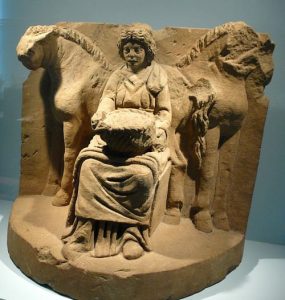
90/180? Winged 'horses'? Pie = feast = ''joy''? Recall Alfreds burnt ones.
Together with... as an example of one aspect within the 'overall' subject..."The exact science of human regeneration is the lost key of Masonry, for when the spirit 'fire' is lifted up through the 33 degrees, or segments [or 'centers'] of the spinal column, and enters into the domed chamber of the human head............it signifies the process by which the 'eye of Horus' {'Aldebaran'?} is opened". [Chapter 16. 'Secret Teachings of all Ages'. M. Hall]. Don't ever forget those first impressions i.e.,.
"Everyone has an internal thought process: that silent other self who speaks to you; the one you debate with." [First sentence; first paragraph; first page of the book by Q. S. Lam].
Refresher: An equilateral 'triangle' spoken of within 'Smiths Cove' /[wet/dry?}. In relation to the drain system being searched for. Measurements recorded = ''Sixty feet {meters?} on all three sides.'' [Curse of Oak Island'. Series 6. Episode 10].
And/or: Close by, Islands that go under the name 'Frog' and 'Apple' Islands. Coincidence?
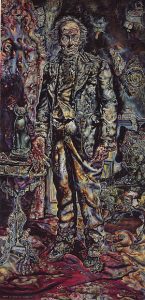
The picture of Dorian Gray. Found in the 'loft'.
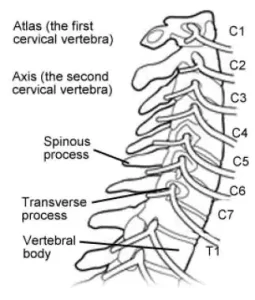
Atlas = ''the first cervical vertebrae - of seven.''
Side note: A {work?} in progress: "Our present concern however is with our immediate progress, for we feel a sense of vulnerability as we climb at an inclined angle {'hypotenuse'?} to the top of a high roofed chamber. The ladder is of wood and iron, and seems old, and very well used. We may wonder about its strength and stability but it seems sound enough, so what we really have to be concerned about is the strength and stability not of the ladder, but of our own Will, and sense of dedication. All that prevents us from climbing through this space is a sense of vulnerable emptiness of faith, courage, and purpose. And so, realizing this, we safely reach the first floor of the 'tower'. From here it is possible to look down into a high ceiling chapel, to the immediate east and beneath us..." ['The Abbey Papers' / G. Knight and R. Wilby].
Question. Kings chamber and/or Grand Gallery?
Refresher: "Error runs down an inclined plane, while truth has to laboriously climb its way up hill".
Pantheon = Oculus = ''Bulls eye''.
And/or: David slays the 'giant' Goliath with a stone to the forehead. One of 'five' taken from the nearby stream. A fresh water one.
''Pure'' link?
Does that tell us anything about Gog/Magog?
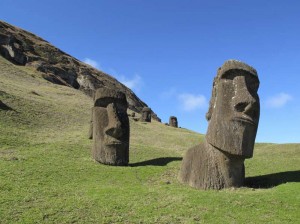
A progression to the {upper?} summit of something? Inner something? Step by step increments. 'Overhang' for a forehead? Try that one.
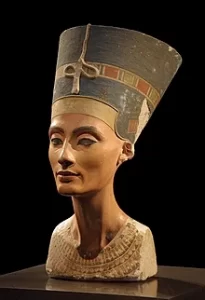
Head and square shoulders?
A working example: "For instance, in all the denominations of Christianity a great part is played by the tradition of the Last Supper of Christ and his disciples. Liturgies and a whole series of dogmas, rites, and sacraments are based upon it. This has been a ground for schism, for the separation of churches, for the formation of sects; how many people have perished because they would not accept this or that interpretation of it. But, as a matter of fact, nobody understands what this was precisely, or what was done by Christ and his disciples that evening {i.e.,in the Upper Room}. There exists no explanation that even approximately resembles the truth, because what has been written in the Gospels has been, in the first place, much distorted in being copied and translated; and secondly, it was written for those who know. To those who do not know it can explain nothing, but the more they try to understand it, the deeper they are led into error. To understand what happened at the Last Supper it is first of all necessary to know certain laws {and or keys/signs}. ['In Search of the Miraculous'].
Follow the title of the book to 'see' it in its broader context.
Refresher: The 'Pyr' of the same word = 'fire'. That 'substance' that the 'trickster character stole'.
"It is important to understand that these centers are not physical in nature and position- though there are parallels with our physical organs and glands. These 'organs' exist in a subtler emotional or psychic or spiritual part of our nature. We may even consider them, not as realities themselves, but as symbols of realities- great, redeeming, and saving symbols." [Chapter 2, 'The Art of True Healing' by Israel Regardie].
'The Reconnection: Heal Others, Heal Yourself' by Dr E. Pearl.
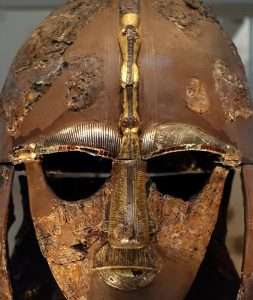
Fire in the belly or the middle of the forehead?
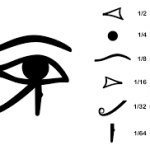
Minds eye: Cognitive analogy?
Analogy with the same intent..."The sacred uraeus, which represented the serpent goddess Wadjet, was a rearing cobra with its hood inflated. Pharaohs wore the uraeus on their brow as a symbol of Kingship. Legend has it, that the uraeus had the power to spit fire in defense of the one who wore it." [Chapter 5, 'The Tree of Life'. Mentioned elsewhere].
Kundalini?
'Juices flowing' - in relation to the 'sweat of the brow' = ''fire'' link? All as a means....
Side note: "He was carried to the weir of Gwyddno Garanhair near Dovey and Aberystwyth, in Cardigan Bay, and rescued from it by Prince Elphin, the son of Gwyddno and nephew of king Maelgwyn of Gwynedd {North Wales}, who had come there to 'net fish' {'153' of them?}. Elphin, though he caught no fish, considered himself well rewarded for his labour, and renamed Gwion 'Taliesin', meaning either 'fine value' or 'beautiful brow' - a subject for punning {sacred ones?} - by the author of the romance." [Page 28 'The White Goddesss' / R. Graves].
''Bay'' in relation to 'Harbour' ?
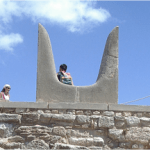
Twin horned? and/or 'semi-circle' and/or Waters of the 'Gap'?
Continued: I.E.,use that 'process' to understand 'Hiram Abif' [in the context of the purpose of 'Freemasonry'] but now with the reader in mind. All explained within. 'See' anything. If not, return later. As you do in any subject. As a final 'scratcher', think about the word 'segment' in relation to 'time'. Benefit of, [i.e.,if only in [A] relative to [B], with [C] in 'mind'.
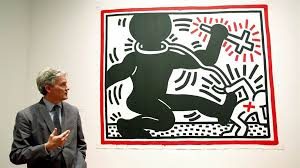
S/E = a beginning?
And/or: {as one example}: ''What is really troubling them is their own Shadow, quite literally. For the first time the subtle levels of ordinary awareness have been expanded to bring into focus the darker side of the student's own nature. It has always been there, it is just that any kind of psychic activity be it basic meditation, simple pathworking and the like {study?}, will have expanded perception just enough for it to appear around the edge of the screen of reality....This shadow can get bigger and blacker {blacksmith?}....The way to deal with it is by acknowledging its existence, as part of yourself. It may be the forgotten self, the ignored self, the repressed self, even, but it is still a real, and actually valuable part of the complex and unique being which is you...Befriend it....find ways of working in harmony....It is part of the landscape of the mind, and will be far more use if you allow it to function properly, as your conscience or Guardian Angel.'' [Page 87 'The Path Through the Labyrinth' / M. Green].

Any Bees in the manger? 'Cancer' to enlarge.
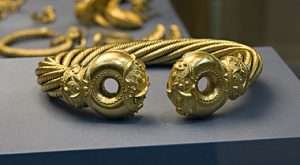
Eight strands each. Sixtyfour in total. And/or The tears of the CREATOR god Ra that turned into bees {workers?} once they hit the ground.
Question. Carbon/Diamond?
Shining one?
Side note: ''The Inca's referred to gold as the 'sweat of the sun'...'' ['Pawn Stars' / 2020].
''In science Archimedes is said to have cried out ''i have found it'' after determining the means of finding the purity for GOLD.''
"Eureka" comes from the Ancient Greek word εὕρηκα heúrēka, meaning "I have found (it)", which is the first person singular perfect indicative active of the verb εὑρίσκω heurískō "I find".[1] It is closely related to heuristic, which refers to experience-based techniques for problem-solving, learning, and discovery.''
House of Dionysus?
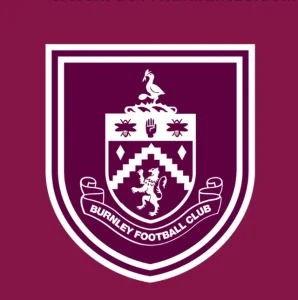
The new Burnley badge: Purple?
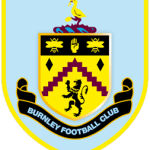
N/W tip of Europe: Lozenge?
Side note: Look at that wonderful thing. Look at how much is going on there. From bottom to top: a ribbon {'scarf'?} with the club name in an excitingly chunky font; a lion, rampant; some kind of ziggurat {triangle/pyramid shape?}; a couple of accompanying diamonds; a raised hand flanked by bees; and, finally, the crowning glory that is a goose with some feathers in its mouth, standing on a claret-and-blue barber’s pole, trying to shake an egg off its foot.
(Anybody looking for a name for their progressive metal band, do help yourself to A Raised Hand Flanked By Bees.)
What does it all mean? As usual with badges, crests and coats of arms, it’s a collection of visual puns, local references and animals standing in uncomfortable positions. That lion, for example, apparently refers to the fact that Burnley’s Turf Moor was the first stadium visited by English royalty; in 1886 the grandson of Queen Victoria, Prince Albert Victor, visited the town to open a hospital, then attended a friendly against Bolton Wanderers.
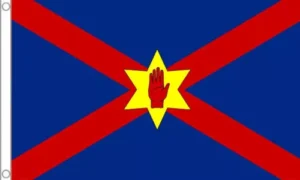
"Another interesting symbol, which later became a prime emblem of Northern Ireland, is the red hand....A myth descibes a race in which the first to reach land would win the throne {'House'} of Ulster. A certain prince called O'Neil was losing the race but cut off his hand and threw it to the shore, ensuring his hand touched land first. {Page 143 'Scota: Egyptian Queen of the Scots' / R. Ellis].
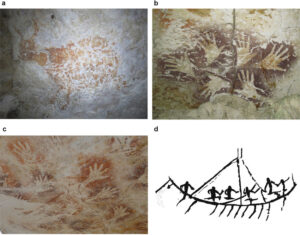
Found in Borneo. Oldest known to date. "Purple around 20,000 years old. The red ones 40,000 years." ['Expedition with Steve Backshall' / S1 EP6]. Left or right?
The hand and the bees -- or, if you speak heraldry, “a dexter hand erect couped at the wrist between two bees volant” -- can also be found on the old Burnley County Borough coat of arms. The bees represent the industry of Burnley and Padiham, as well as providing a cute pun on Turf Moor’s old Bee Hole End, while according to the (sadly apparently defunct) website The Beautiful History, the hand is a reference to the town motto, Hold to the Truth.
James the Just?
And that goose? A stork, apparently, even if it looks a little ... chubby for a stork.
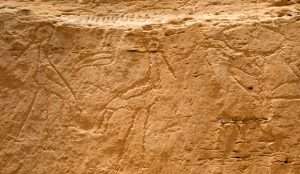
Ibis between two storks. Oldest hieroglyph ever found in Egypt?
All to do with local families of historical prominence, this one: the stork is a pun
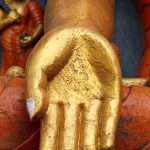
Hand of Buddha: Brahma to enlarge.
on the Starkie family. Those feathers in its mouth might represent the Lacy knot, the badge of the DeLacy family which features on the borough crest, though if that’s the case then it’s been slightly chewed. That’s not a barber’s pole either; that’s a hill surrounded by cotton plants {'garments'?}. Apparently. Rather delightfully, nobody seems to have any idea why that stork-goose has got an egg stuck on its foot {some say, a 'golden' one}.
Left or right one?
Go to top of page Go to bottom of page
CONTINUED: "In the 'Visions, Commands and Similitudes', by Hermas, an Apocryphal work discarded by the Athanasian Council, the 'Law of God' is spoken of as a tree, and as the 'Son of God', i.e., "This great tree which covers the plains and mountains and all the earth is the 'Law of God', published throughout the whole world. Now this Law is the 'Son of God' who is preached to all the......
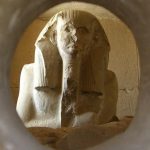
Hathor style headdress. Large ears?
ends of the earth. The people that stand under its shadow, are those who have heard his preaching and believe."[Chapter 20, 'The Lost Language of Symbolism', by H. Bayley].
Recall what all 'Laws' are composed of. That final link to the 'son of ' something. Use the 'find' tool.
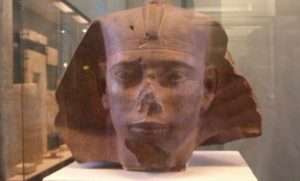
He is the king who introduced the royal title Sa-Rê (meaning “Son of Ra”) and the first to connect his cartouche name with the sun god Ra.
"Clement of Alexandria elucidates the idea that Jesus is the 'son of god' by explaining: 'The Son is the consciousness of the Father.' The 'Father' is the Mystery...the dazzling darkness of UNconscious Consciousness." [From the book by T. Freke and P. Gandy. Emphasis, this readers].
"The lengthened shadow of a man Is history, said Emerson." [Extract from 'Selected Poems' by T. S. Eliot].
Imhotep: that very first 'incarnation'?
Smith/Jones to enlarge.
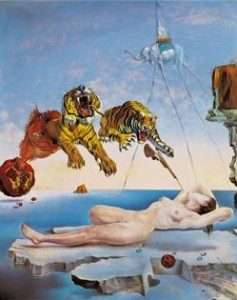 Exercise: ''By the time he had reached the comparative safety of the pine trees, the land all around was being drained of darkness, leaving a residue of a grey dull light which prefigured the dawn of the shortest day of the year. Tom threw himself down on a cushion of pine needles....he felt like a black void was enveloping him....he lay on his side with kness to his chest {'child/rebirth' link?}....he did not blink even when the reluctant sun opened its indifferent eye on the horizon, shooting its level beams the length of the valley {Stonehenge causeway?} Beyond the plantation of firs and pines, was the small forest of oaks which extended to the rear of the 'hotel'....Apart from midsummer, the winter solstice was Hannah's favourite day....Today the sun was in its last decline...Tomorrow would bring not just a new day but a New Year when the reborn sun would begin to 'loop' higher in the sky and lengthen the days downhill towards summer...The beauty of the morning suggested to Hannah that the sun was hastening joyfully towards death, eager for its resurrection the following day....It was still early in the day, but already the waning moon was as high in the pale sky as the declining sun. The winter solstice was drawing to a close. The last of the tall pines threw long shadows across Winston Powell's fields....the road gleamed dully like gunmetal in the dying light.'' [Pages 164/170/173/188 'The Serpents Circle'].
Exercise: ''By the time he had reached the comparative safety of the pine trees, the land all around was being drained of darkness, leaving a residue of a grey dull light which prefigured the dawn of the shortest day of the year. Tom threw himself down on a cushion of pine needles....he felt like a black void was enveloping him....he lay on his side with kness to his chest {'child/rebirth' link?}....he did not blink even when the reluctant sun opened its indifferent eye on the horizon, shooting its level beams the length of the valley {Stonehenge causeway?} Beyond the plantation of firs and pines, was the small forest of oaks which extended to the rear of the 'hotel'....Apart from midsummer, the winter solstice was Hannah's favourite day....Today the sun was in its last decline...Tomorrow would bring not just a new day but a New Year when the reborn sun would begin to 'loop' higher in the sky and lengthen the days downhill towards summer...The beauty of the morning suggested to Hannah that the sun was hastening joyfully towards death, eager for its resurrection the following day....It was still early in the day, but already the waning moon was as high in the pale sky as the declining sun. The winter solstice was drawing to a close. The last of the tall pines threw long shadows across Winston Powell's fields....the road gleamed dully like gunmetal in the dying light.'' [Pages 164/170/173/188 'The Serpents Circle'].
A shot across the bow? or ''snapshot of something''?
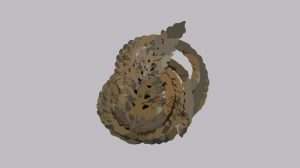
Oak island Brooch. Three spiral levels - made from ''two entwined threads'' - 13 branches. Question. A feather in the cap?
"The tree of Osiris was a conifer, a pine cone often appears on the monuments......as an offering to the awakening spring. Fir cones have been assumed to possess a merely phallic significance, but the real reason for the sanctity of the conifers was probably preserved by the Gnostics. According to King, the fir - tree was "admitted into this system because its spiry form imitates a flame, for which same reason its cone was taken for the symbol of the element fire." The name 'fir' may evidently be equated with fire, an idea which is corroborated by the fact that the Welsh for fir - tree is 'pyr', i.e., the Greek for fire. The Greek for 'fir' is peuke, i.e.,the Great Father or pere". [Same chapter, same book].

Zoroastrian or Paisley?
And/or: ''Fire is a vital part of a boreal forest. There's so many well adapted things in a boreal forest and the Jack Pine comes in first place. The cones grow on the tree and are sealed with pitch and can stay on the tree for twenty years. The seeds within just as viable at twenty years as at one year old. The cones can only open by fire. They carry there own fuel supply. ['Ray Mears: Northern Wilderness' / BBC 4 / S1 EP1].
Side note: ''In central Nazareth, just 100 metres from the Church of the Annunciation, is a lesser-known site that may include the remains of Jesus’ childhood home. Archaeological research in 2006-10 indicated that an underground complex beneath the convent of the Sisters of Nazareth in 6166 Street may be the location of the long-lost Church of the Nutrition.
N.B. Great 'fire' of London = 1666.
And: It was the temple of Venus that was placed over {by the Romans} - the tomb of Christ.
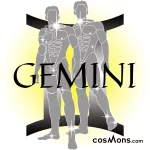
'Brothers' as a means...?
Continued: According to a seventh-century pilgrim, this Byzantine-era church was believed to have been built over the house of Mary and Joseph, where the young Jesus was nurtured. Rebuilt by the Crusaders, it was finally destroyed by fire, probably in the 13th century.
“Was this the house where Jesus grew up? It is impossible to say on archaeological grounds,” lead archaeologist Dr Ken Dark has written. “On the other hand, there is no good archaeological reason why such an identification should be discounted.”
And/or: ''Mount Precipice - on the outskirts of Nazareth. Above it are the humble cave dwellings {grotto's} of Mary and Joseph...Close by is the place where Jesus was to be thrown off...Also Close by is the Valley of Jezreel - meaning 'God Sows'. The hills are covered in pine trees which contain seeds....Looking towards the sea there is a mountain range that forms a very narrow passage if you want to go to the south... leading to Megiddo {'Mound of the Governor'}. To get into the land one had to come through that narrow passage.'' ['First Sunday of Advent: Star of Wonder' / Magdala / Israel / 2022].
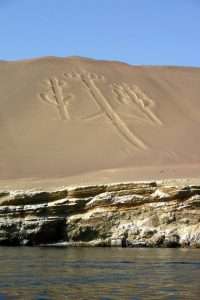
 And/or: ''The Scots Pine is the native pine of Britain....because of its many seeds - is a masculine fertility cone. It is carried by Dionysos and Bacchus, whose wand is 'tipped' with a fir cone and wound with ivy. We regard ivy as an animus representation, so this is Dionysos responding to the animus energy of women with whom he is seen to associate and from whom he learns - IN MYTH....It is a birth tree and sacred to Artemis and Druantia, the Gallic fir goddess - Mother of the tree calander, and keeper of the Sacred Grove and Fountain of Renewal...The Pine is the traditional Xmas tree- the tree of the first day of the waxing half of the year, after midwinter. On the tree should hang seven candles like the Jewish Menorah. The tree is then the illuminated {''manifested''?} Tree of Life, the seven 'lights' being the seven stars in Ursa Major, near the North Pole - the TIP of the tree that is the world axis. This tree is also the alchemists tree of the seven metals - that make the 'perfected' human when correctly balanced and fused {'crystallised'?}'' [ Page 109/110/131/135 'Fruits of the Moon Tree' / A. Bleakley].
And/or: ''The Scots Pine is the native pine of Britain....because of its many seeds - is a masculine fertility cone. It is carried by Dionysos and Bacchus, whose wand is 'tipped' with a fir cone and wound with ivy. We regard ivy as an animus representation, so this is Dionysos responding to the animus energy of women with whom he is seen to associate and from whom he learns - IN MYTH....It is a birth tree and sacred to Artemis and Druantia, the Gallic fir goddess - Mother of the tree calander, and keeper of the Sacred Grove and Fountain of Renewal...The Pine is the traditional Xmas tree- the tree of the first day of the waxing half of the year, after midwinter. On the tree should hang seven candles like the Jewish Menorah. The tree is then the illuminated {''manifested''?} Tree of Life, the seven 'lights' being the seven stars in Ursa Major, near the North Pole - the TIP of the tree that is the world axis. This tree is also the alchemists tree of the seven metals - that make the 'perfected' human when correctly balanced and fused {'crystallised'?}'' [ Page 109/110/131/135 'Fruits of the Moon Tree' / A. Bleakley].
''Avon in Welsh means ''river''....''
Question. Chosen name for the river that those ''blue stones'' were taken to?
And/or: ''The Dagda and Elatos may thus both be equated with Osiris, or Adonis, or Dionysus, who were 'born from a fir' and 'mothered' by the horn moon-goddess Isis, or Lo, or Hathor.'' [Page 98 'The White Goddess' / R. Graves].
In the same paragraph 'fir' in relation to 'knowledge' {by way of the pineal gland?] = glass/white pebbles/semicircle/thirteen links all in relation to New Grange {on its 'hill'?}.
New Name? in regards to whom?
''She who loves Silence'' links?
Question. Any conifers at Woodhenge?
Side note: An equilateral 'triangle' spoken of within 'Smiths Cove' /[wet/dry?}. In relation to the drain system being searched for. Measurements recorded = ''Sixty feet {meters?} on all three sides.'' [Curse of Oak Island'. Series 6. Episode 10].
And/or: Close by, Islands that go under the name 'Frog' and 'Apple' Islands. Coincidence?
Issac's Point? Someone's New Name?

The tree's for the wood or the wood for the tree's?
Something hinted at {i.e.,by the use of familiar keys}: "Sing to me of Oakenhill Wood. The trees were not Oaks; they were conifers, but no matter...'Now is a slow, unfolding moment perpetually present. Here is always now. Time passes with the tracks end...In deep silence...Here is a universe of tall trees. Trunk after trunk to the world's end...Here the Word looks through created eyes'..." ['The Sword in the Sun'].
Logos - silence - eyes IN RELATION to Oaks {'hill'}- conifers {'trees'}. All as a means...?
Side note: Recall the Pine trees half way up the {mountain?} in the program 'The Lost Tomb of Genghis Khan'. Enlarged elsewhere. Coincidence?
Understanding the above, gives clues as to Oak Islands true purpose. Found on the island - five ''pine cone'' shaped boulders, that when ''assembled'' formed a cross. The crossover point of which was found another buried stone of similar shape, with a 'face' inscribed upon it, [i.e.,six in total. Recall what 'six' implies]. Coconut fiber also abundant. ['Oak Island', Discovery/ History channel 2014].
Side note: Almec heads also found buried - face up. Enlarged within.
Of the Palm tree family. [i.e.,very significant within this subject. See any symbolism books for verification].

Face looking through it? Looking for the light?
SIDE NOTE: "Ancient symbols have great value - if only because they compel one to avoid the pitfall of ''taking things for granted''. By making things difficult, they force the mind to dig down into the roots of reality and to fathom deeply unconscious vital processes." ['The Zodiac as the Universal Matrix' / Dane Rudhyar].
Face to face?
Follow the title of the book to 'see' it from that first {sky religion?} point of view. Question. Top/down? N/E?
Continued: "The spelling cocoanut is an archaic form of the word. The term is derived from the 16th century Portuguese and Spanish 'coco', meaning ''head'' or ''skull'', from the three indentations on the coconut shell that resemble facial features." [Wikipedia, ''Coconut'']. Other information; to assess correctly; found within.
At the very least it gives a direction to follow - as to a 'mind set'. Question. Anthropology?
Both domains also known as the tree of life and the tree of knowledge. ’That’ domain relating to the tree of life. Why?
Because the Third [3..] common factor that they imply is that the life ’bit’ relates more to ‘that’ ‘domain’ than it does to this one. Hence the reason; they ‘believe’...you find yourself in that one when this one ‘ends’. A transition from ‘A’ TO ‘B’. From ‘this’ Domain to ‘that’ one.
What they are implying therefore is that all living forms while alive in this physical world [A] have something of [B] within them as they eat and breath. That ‘something’ relates to our origins. Hence the reason for the transition. From this world to that one. It has a certain logic to it...but only once you begin to understand what they imply by the ’life bit’ in relation to A,B and eventually...C. [ Explained elsewhere ] .
Analogy; with same intent..."What is the life of this world but amusement and play? But verily the Home in the Hereafter - that is life indeed, if they but knew." [Quran 29:64].
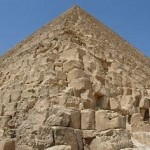 4...[B] not only co-exists but as implied by the same authors, existed; in part; prior to [A] How? Hypothetically using Ockhams Razor there can only be two possibilities; if true. By evolution, i.e., Physics evolution, i.e., as part of the ‘Big bang/inflation theory’, not yet identified. In other words both possibly developing together. Or by design. What ever that implies. A simplistic way of explaining it...is to identify [B]...hypothetically, with the word ‘eternal’ which after all is what the ’afterlife’ is purported to be. Therefore should not something that 'represents'; ‘eternal’; have existed prior to something not so eternal. [A]?
4...[B] not only co-exists but as implied by the same authors, existed; in part; prior to [A] How? Hypothetically using Ockhams Razor there can only be two possibilities; if true. By evolution, i.e., Physics evolution, i.e., as part of the ‘Big bang/inflation theory’, not yet identified. In other words both possibly developing together. Or by design. What ever that implies. A simplistic way of explaining it...is to identify [B]...hypothetically, with the word ‘eternal’ which after all is what the ’afterlife’ is purported to be. Therefore should not something that 'represents'; ‘eternal’; have existed prior to something not so eternal. [A]?
 Side note: "There are only tiny scraps of evidence for the Big Bang and no evidence at all about what went before. When it comes to the beginning of creation, neither believers nor atheists have much to go on. Huge inverted pyramids of speculation are balanced on pinpricks of evidence. In this area as in many others - certainty - is simply an inappropriate response to the nature and amount of evidence we have. In a recent book, the American philosopher Alvin Plantings argued similarly that we cant rule out that evolution has come about by design - but we cant rule out the contrary either." [Preface to the book 'The Sacred History' / J. Black].
Side note: "There are only tiny scraps of evidence for the Big Bang and no evidence at all about what went before. When it comes to the beginning of creation, neither believers nor atheists have much to go on. Huge inverted pyramids of speculation are balanced on pinpricks of evidence. In this area as in many others - certainty - is simply an inappropriate response to the nature and amount of evidence we have. In a recent book, the American philosopher Alvin Plantings argued similarly that we cant rule out that evolution has come about by design - but we cant rule out the contrary either." [Preface to the book 'The Sacred History' / J. Black].

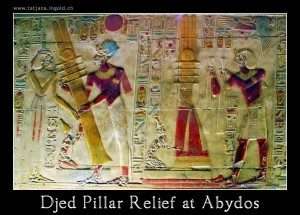
''Raising''?
5...The [B] factor; according to the same authors; [ and therefore by the same logic/implication [c]...explained elsewhere ] gives each living form what can only be described as a ‘Double’. A double in the sense, that it allows that continuation. The real question is - which is the more 'real' one. Keeping in mind that the physical one {exterior?} has a 'sell by date' associated with it. The Germans call it a Doppelganger, [ forget the movie]. Remember...objectivity. To understand the subject only. Regardless of those first impressions. Biblical link.."Remember him.....before the silver cord is severed, or the golden bowl is broken". [Ecclesiastes 12:6] link to the 'golden child', symbolism of. Explained within.
Side note: ''Doppelganger'' = Gregor Clegane? i.e., after the fight with Oberyn Martell. {'Game of Thrones'}.
Remember your Creator before the silver cord is broken and the golden bowl is crushed, the pitcher by the spring is shattered and the wheel at the cistern is crushed...
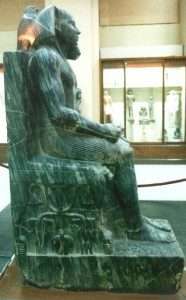
'Eight' pyramids built from Djoser to Djedefre. Khufu =Fifth. THEN Djedfere {'six'} THEN BACK TO Khafre {'seven'}.
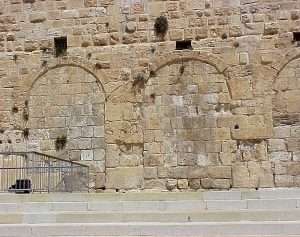
Eastern_gate_of_huldah_ Blocked?
“Before the sun, and the light, and the moon, and the stars are darkened {'eclipse'?}, and the clouds return after the rain; in the day when the keepers of the house shall tremble {'Master'?}, and the strong men shall bow themselves {'Orion'?}, and the grinders cease because they are few, and those that look out of the windows shall be darkened, and the doors shall be shut in the street {'blocked'?}; when the sound of the grinding is low {'teeth'?}, and one shall rise up at the voice of a bird, and all the daughters of music shall be brought low; yea, they shall be afraid of that which is high, and terrors shall be in the way; and the almond tree shall blossom, and the grasshopper shall be a burden, and desire shall fail; because man goeth to his everlasting home, and the mourners go about the streets: before the silver cord is loosed, or the golden bowl is broken, or the pitcher is broken at the fountain, or the wheel broken at the cistern, and the dust returneth to the earth as it was, and the spirit returneth to God who gave it. Vanity of vanities, saith the Preacher; all is vanity.”
“This passage (Ecclesiastes 12:2-8) has one of the most striking and beautiful allegories in the literature of mankind. Every phrase describes with a vivid metaphor, a symptom of the infirmities of old age.” Ibid.
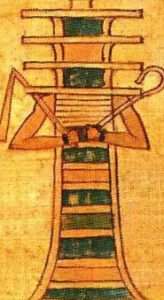
Seven or eight?

Djedefre's Wife - ''Beloved''?
There have been many efforts to literalize what is meant by the beautiful metaphors here. Barton cited no less than seven systems of interpreting all these; International Critical Commentary, Vol. 18, p. 286 but one of the most beautiful of the renditions we have seen is this: From the Good News Bible.
Ecclesiastes 12:2-5 a “That is when the light of the sun, the moon, and the stars shall grow dim for you, and the rain clouds will never pass away. Then your arms, that have protected you, will tremble, and your legs, now strong, will grow weak. Your teeth will be too few to chew your food, and your eyes too dim to see clearly. Your ears will be deaf to the noise of the street. You will barely be able to hear the mill as it grinds or music when it plays, but even the song of a bird shall wake you from sleep. You will be afraid of high places, and walking will be dangerous. Your hair will turn white; you will hardly be able to drag yourself along, and all desire will be gone.”
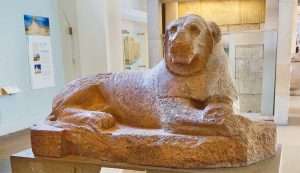
Had wanted to visit the sites linked to the Soleb Lions (also known as the ‘Prudhoe Lions’) at the British Museum ever since childhood. I would hold my grandfather’s hand as we stood and playfully growled at these two realistic-looking red granite lions. The lions had been moved at least once in antiquity – along with six black granite rams – to Gebel Barkal in Sudan by the kings of Kush.
“Nevertheless, this remarkable passage is best taken in its entirety, not broken down into teeth, legs, arms, etc., which doubtless are intended. ”The Bible Speaks Today, p. 100. This amazing passage, as a whole, without being broken down reveals a picture of us in our old age that is plain enough, much plainer than any itemized inventory of our infirmities could possibly be.
“The grinders cease” “This no doubt refers to arms, legs, teeth, and eyes. ”Barnes’ Notes on the Old Testament, op. cit., p.111.
In spite of the emphasis upon old age and death in this chapter, Solomon shows his real conviction in the very first verse. “He does not say, `Remember you must die,’ but, `Remember thy Creator.’ In this Solomon clearly distinguishes himself from all skeptics, cynics and Epicureans. with whom he has often been confused. ”The New Bible Commentary, Revised, p. 577.
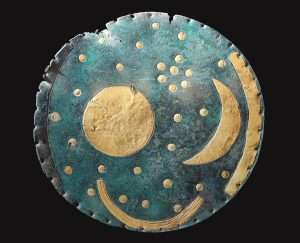 “All the daughters of music shall be brought low” “He has not only lost his ability to sing, but the loss of hearing means he cannot even appreciate music”! The New Layman’s Bible Commentary, p. 749.
“All the daughters of music shall be brought low” “He has not only lost his ability to sing, but the loss of hearing means he cannot even appreciate music”! The New Layman’s Bible Commentary, p. 749.
“And one shall rise up at the voice of a bird” Despite the beauty of the @@GNP rendition, we cannot agree that the song of a bird would awaken an old man who could barely hear the sound of a mill or the street noises. Birds sing quite early in the morning, at the break of day; and what is meant is that old people wake up early. However, this writer (who is an old man) would like to go on record with the testimony that the song of a bird never wakes up anybody who is wearing a hearing aid!
“Afraid of that which is high” Here is the reason why old men do not like to climb ladders.

light oxen.
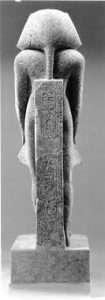
"Behind Will, stands desire."
“Terrors shall be in the way” For example, when the Doctor says of the cancer test, “Yes, it’s positive,” one will know about those “terrors… in the way.”
“The almond tree shall blossom” Cook rendered this, “The almond tree shall be despised,”Barnes’ Notes on the Old Testament, op. cit., p. 112. and interpreted it to mean that pleasant food would be despised by the aged. However, most scholars take it as an emblem of grey hair. “The blooms of the almond tree are a brilliant pink; but in time turn snow white; it is a fit metaphor of the grey headed old man. ”The Pulpit Commentary, Vol. 9b, p. 300.
“The grasshopper shall be a burden” “The point here is that the lightest load is a burden to the aged.”The Bible Speaks Today, p. 101. It means what we would say if we remarked, “Why, that old man couldn’t even carry a grasshopper.”
“And desire shall fail” The Septuagint renders this, “The caper berry shall fail.” The Greek Septuagint (LXX). “This berry was widely used in the East as an aphrodisiac (sexual stimulant),”James Waddey, p. 71. or, “As a provocative of the appetite. ”The Pulpit Commentary, op. cit., p. 300 In this light, we may say that the old man’s desire shall fail, all of it, whether for sex or for food.

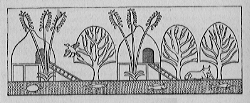 “Man goeth to his everlasting home” Without a doubt the best rendition of this is, “Man goeth to his eternal home.” From the Revised Standard Version. What a glorious pronouncement is this! An eternal home? That most certainly teaches immortality, otherwise man would have no use whatever for an eternal home. It also teaches the doctrine of the resurrection, because, by no other means than that of a resurrection, would the dying sons of Adam ever enter such a home.
“Man goeth to his everlasting home” Without a doubt the best rendition of this is, “Man goeth to his eternal home.” From the Revised Standard Version. What a glorious pronouncement is this! An eternal home? That most certainly teaches immortality, otherwise man would have no use whatever for an eternal home. It also teaches the doctrine of the resurrection, because, by no other means than that of a resurrection, would the dying sons of Adam ever enter such a home.
“And the mourners go about the streets” This is a reference to the paid mourners employed in ancient times to bewail the departed. The New Testament mentions these in connection with the raising of the daughter of Jairus. Here, their going about the streets was explained by Deane: “These were getting ready to ply their trade, expecting the death of the old man hourly. ”The Pulpit Commentary, op. cit., p. 301.
“Before the silver cord is loosed, or the golden bowl is broken, or the pitcher is broken at the fountain, or the wheel broken at the cistern” We cannot pretend to know with dogmatic certainty what is meant here. There are two ways of explaining it, (1) after the manner of the 19th century commentators, and (2) after the opinion of recent writers. Here are the two views:
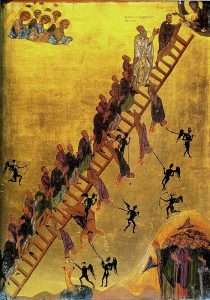

Atlas = ''the first cervical vertebrae.''
(1) “The silver cord is the spinal cord, so called from the spinal nerve’s likeness to a cord. Just as the previous verses have described the external evidences of old age, these explain the internal changes that bring death to the body itself. The golden bowl (so called from its priceless value) is the container for the brain itself. When the one is loosed and the other broken, death ensues.”Adam Clarke’s Commentary on the Bible, op. cit., p. 836.
(2) “The golden bowl and the silver cord here are a lamp. The silver cord held the bowl. When the cord broke, the bowl fell putting out the light. Light is, of course, a Biblical symbol of life.”Broadman Bible Commentary (Nashville: Broadman Press, 1972), Vol. 5, p. 127.
Both of these explanations mean the same thing. They both refer to death. The second explanation fails to explain why the cord that held the lamp was “the silver cord.”
“Or the pitcher is broken at the fountain, or the wheel broken at the cistern” “In the Bible, both light and water symbolize life;”Ibid. and in the metaphor here, either a broken pitcher at the fountain or a broken wheel at the cistern would cut off the supply of water. Thus all four of the things in this verse are metaphorical references to death.
“And the dust returneth to the earth as it was, and the spirit returneth to God who gave it” This verse indicates a phenomenal change in Solomon, exactly as does the statement in. Ecclesiastes 12:5, that, “Man goeth to his eternal home.” See comment above.
“And the dust returneth to the earth as it was” This clear reference to the Creation of man (Genesis) is not the only allusion to the fall of man that soon followed, `You are dust, etc’ (Genesis 3:21). In Ecclesiastes 7:29, he contrasted man’s uprightness (as God created him) with what followed in the invention of human devices for evil.” The Bible Speaks Today, p. 104
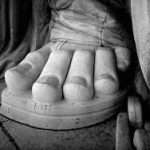
111' Tall. 'Lady of the Harbour'. "Chains" to enlarge.
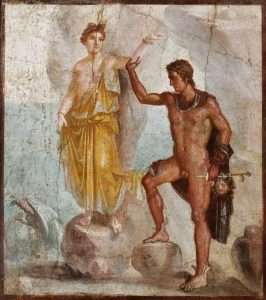 “Solomon at this point had found his spiritual footing. While estranged from God and depending upon human wisdom, he asked, `Who knoweth the spirit of man, whether it goeth upward, or the spirit of a beast, whether it goeth downward’? (Ecclesiastes 3:21). Here he confidently affirmed that man’s spirit returns to God who gave it. Faith had won the victory over doubt.” James Waddey, p. 73. Murphy, and others, deny what the sacred text clearly says here, asserting that, “Solomon had no knowledge of a blessed immortality.” The Jerome Bible Commentary, p. 540. Such false opinions are effectively refuted by what is said here and in Ecclesiastes 12:5.
“Solomon at this point had found his spiritual footing. While estranged from God and depending upon human wisdom, he asked, `Who knoweth the spirit of man, whether it goeth upward, or the spirit of a beast, whether it goeth downward’? (Ecclesiastes 3:21). Here he confidently affirmed that man’s spirit returns to God who gave it. Faith had won the victory over doubt.” James Waddey, p. 73. Murphy, and others, deny what the sacred text clearly says here, asserting that, “Solomon had no knowledge of a blessed immortality.” The Jerome Bible Commentary, p. 540. Such false opinions are effectively refuted by what is said here and in Ecclesiastes 12:5.
“This verse says that man’s spirit is immortal; it does not die nor sleep in the grave. The New Testament tells us clearly that there is consciousness after death (Luke 16:19-31).”James Waddey, p. 73. In this verse the writer (Solomon) rises above the doubt expressed in Ecclesiastes 3:21. He did not contradict himself in the two passages, as some suppose, and on that false supposition call Ecclesiastes 12:7 an interpolation. No. Solomon here is saying that after examining all the doubts and perplexities, “He has now reached the firm conclusion that there is indeed a future for the individual soul.”The Pulpit Commentary, op. cit., p. 302.
Barton also agreed that it is totally unnecessary to view this and Ecclesiastes 3:21 as contradictions. “It is possible for any man to have pessimistic doubts in which he questions whether a man’s spirit differs from that of a beast, while still holding belief in God.”International Critical Commentary, p. 192.
 “Vanity of vanities, saith the Preacher; all is vanity” Why does this statement appear just here? This is somewhat of a signature, indicating that Solomon himself is the author of these final verses just as he was the author of the rest of Ecclesiastes. No other person could possibly have inserted this here. The words stand, not only as a signature, but also, “As an introduction to the final verses.”The Preacher’s Homiletic Commentary, Vol. 14, p. 172,
“Vanity of vanities, saith the Preacher; all is vanity” Why does this statement appear just here? This is somewhat of a signature, indicating that Solomon himself is the author of these final verses just as he was the author of the rest of Ecclesiastes. No other person could possibly have inserted this here. The words stand, not only as a signature, but also, “As an introduction to the final verses.”The Preacher’s Homiletic Commentary, Vol. 14, p. 172,
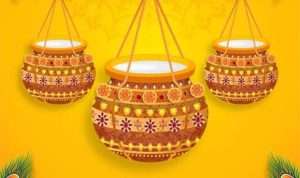
Twentysix links in a figure of 'eight'.
“Saith the Preacher” Radical critics, ever eager to find fault, suppose that the introduction of the third person at this point indicates a different writer. Ridiculous. Paul often lapsed into the third person, as did many other ancient writers. Cook pointed out that, “This epilogue makes the author to be (Solomon) the same as the author of Proverbs.” Barnes’ Notes on the Old Testament, op. cit., p. 112.
Be loosed - The termination of life is signified generally by the snapping of the silver cord by which the lamp hangs from the ceiling; by the dashing in pieces of the cup or reservoir of oil; by the shattering of the pitcher used to bring water from the spring; and by the breaking of the wheel by which a bucket is let down into the well. Others discern in the silver cord, the soul which holds the body in life; in the bowl, the body; and in the golden oil (compare Zechariah 4:12) within it, the spirit.
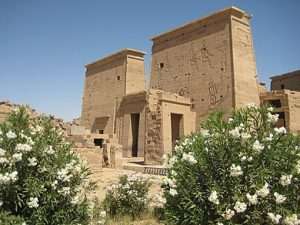
Face to Face. 'Male' or 'female'? Shadow or anima?
From a different perspective: ''In the Gnostic texts the Pistis Sophia, contemporary with the canonical books of the New Testament - and considered by some scholars to have equal claim to authenticity - there is a strange story.....Mary sees a boy who looks exactly like her son - she takes him to be her son. But then this boy disconcerts her by asking to see her son, Jesus. Fearing that this must be a demon of sorts, she ties the boy to the bed {'nine lengths'?}, then goes out into the 'fields' looking for Joseph and Jesus. She finds them erecting a 'vine' pole {Dionysos link?}. The 'three' of them go back to the 'house'. The boys gaze at each other, amazed, and embrace. The secret tradition that traces the subtle, complex process by which human form and human consciousness was put together, has a parallel in its tracing of the extremely complex process by which the incarnation of the 'Word' was brought about.'' [ Page 286 'The Secret History of the World'].
Try Smith and Jones.
Recall 'H'elen and her husband 'reuniting' near the Nile delta - in relation to the story of Troy.
Refresher: "The Kingdom of Heaven is within you. The time has come for external forms and expressions to be left behind. There is no Temple in the heavenly Jerusalem, for religion has no place in heaven. Man is his own temple,[key] and his heart is the altar.[key]"
'The Flaming Door: The Mission of the Celtic Folk Soul' / C. Merry.
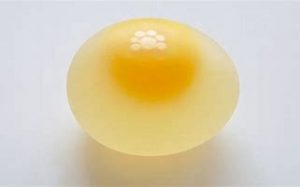
''Chick''
Analogy of same..."The ninth Sephirah is the foundation of the lower man. It is called Nephesh, and it is lunar vegetative and instinctual principle which is concerned solely with the act of living. This animal soul is at one and the same time a principle of energy and plastic substance, the totality of the vital life currents as well as the invisible astral mould on which the gross atoms arrange themselves as the physical body. As a substantive principle it is the astral body, the plastic double built of astral substance and serving as the basis or design of the physical body... " [Chapter 5, 'The Tree of Life'. Mentioned elsewhere].
Question. ''Double'' = life 'bits' back-up system? After all are we not told that through/by evolution many 'parts' replicate themselves as a safety feature. If so, why not in the 'Macro' sense of the word? IF NOT - then there can only be one other possibility?
'Lunar' in relation to 'sun'. Unconscious in relation to something now becoming conscious, i.e.,'nine' in relation to 'ten' [enlarged elsewhere]. 'Animal' in relation to man. Lower in relation to higher. 'Vegetative' in relation to 'mineral'. As a representation of something. Gross in relation to primary and secondary.
OR "I knew of a man, who was caught up to the third heaven...whether in the body or out of the body i do not know. And he was caught up into paradise and told things that are not to be told, that no mortal is permitted to repeat." [2 Corinithians 12:2 - 4].

Menorah on a ''double'' base {cube?].
Tibetan Buddhism refers to same; in part; as the "Rainbow Body", others have 'similar' names, i.e., "In Sufism it is called "the most sacred body" and the "supracelestial body". Taoists call it "the diamond body", and those who have attained it are called the "immortals" and the "cloudwalkers". Yogic schools and Tantrics call it "the divine body". In Kriya it is called "the body of bliss". In Vedanta it is called "the superconductive body". The ancient Egyptians called it "the luminous body or being", [akh] . This conception evolved into Gnosticism, where it is called "the radiant body". In the Mithraic liturgy it is called "the perfect body". In the Hermetic Corpus, it is called "the immortal body". In the Alchemical tradition, the Emerald Tablet calls it "the golden body". [Chapter nineteen. 'The Source Field Investigations'].
''Cloud People''?
The 'law of one' refer to that process as a 'harvest'. [Chapter six, and throughout. 'The Synchronicity Key' by D. Wilcock]. The same author refers to the same as 'double bodied'. [Chapter 21].
Question. 'Double cube' link? Enlarged elsewhere.
Simplified version of same {principles?}: "Central to the esoteric understanding of man is the concept of what is known as the 'seven bodies'. The words are somewhat misleading; the word 'bodies' is helpful in some respects; ''levels of consciousness'' is a better term and ''levels of being'' is preferable at other times. Language is bound to fail us...there is a good deal of poetry rather than scientific precision in what is {attempted?} to be described..." ['The Fourth Dimension' by A. Duncan].
''Seven is the number of fullness'' {'Mystery of Numbers' / A. Schimmel}.
The ancient Egyptians referred to that 'process' eventually as ones ‘Ka’. Represented by the figure Osiris. The Alchemists, in a round about way, referred to it, [as a 'physical' representation of... in 'its' early stages]... as the ‘Philosophers stone’. [ Books of same...’Alchemy for idiots’. Or for something more demanding...’Philosophers stone’. By I. Regardie].
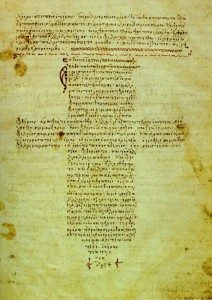
Hippo-cratic Oath.
The beginnings of which is represented, in the Egyptian case "with a large block of squared granite" that was found on a ledge within the pit at the extreme lower end of the Subterranean Chamber within the Great pyramid, i.e.,within, or below the Primordial mound. Think about it, i.e.,granite in relation to limestone. The very 'thing' that the Great pyramid is sat on. [Chapter two. 'Pyramid of secrets'. Mentioned elsewhere].
"Alchemical drawings depict the First Matter in a variety of other forms. Some show it as a square stone while others depict eight-pointed stars or luminous spheres. In fact, the 'Lexicon of Alchemy,' first published in 1612, gives 84 synonyms for the First Matter." [Chapter 4, 'The Emerald Tablet' by D. Hauck].
'Square of Pegasus' ?
And/or: ''The Hebrew 'alphabet' usually called 'Square Hebrew' - are not really Hebrew characters at all. They are of Babylonian origin, and were adopted by Hebrew scribes about the 5th century B.C. By some it is called the 'Flame Alphabet' because each of its signs is developed from the character YOD, which resembles a flame. The square shape is a hint to the 'occult' purpose of the alphabet. The square is the geometrical figure corresponding to the number 4, which symbolizes order and measurement." [Page 83 of the book by P. F. Case. Vol 1].
"There is a mosque whose foundation was laid from the first day on piety; it is more worthy of thy standing forth therein." [i.e., in relation to ''The original mosque of piety built by the Muhammad himself]..."Which then is best? - he that layeth his foundation on piety to God and his good pleasure? - or he that layeth his foundation on an undermined sand cliff ready to crumble to pieces?" [Quran 9:108/109].
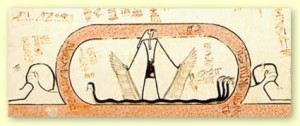
Sokar on his sands. An image within the imagination [minds eye, or the eye of Horus], as a precursor to something more substantial, more permanent, in relation to a foundation. Hence the link to sands, especially those shifting ones, relative to making something more solid under ones feet. That 'process', represented by the snake. Question. Why the difference in snake heads. Clue. It has something to do with a development of something. The origin [start point], of which, will always be shown on the left. As a further head scratcher why should left be associated with west. Notice the figure looking left to right. West to East. Darkness to light. Clue. Something to do with the word Fall. Its representation within this subject.
That final link to 'its' "unconscious" representation. That 'potential' yet to be realized,[until it becomes a 'known' quantity. Both of which, ['known', 'unknown' and/or 'unmanifest, 'manifest' ], have to be represented in some form].
Analogy of same..."The initiate of the 'return' is self conscious whereas the beginner on the journey is almost self UNconscious." [Extract taken from the book by J. Dubuis]. See it?
Example of 'its' physical representation {manifested?}..."Enclosure C's circular walkway, between the outer and inner temenos walls, was entered from the south through a north-south-aligned stone passage measuring 25 feet in length. Schmidt calls it the 'dromos', after an ancient Greek word meaning avenue or entranceway, because of its likeness to the passage ways attached to the beehive - shaped 'tholoi' tombs of Mycenaean Greece. At the southern end of the dromos a curious U-shaped stone portal, or inverse arch, was set up as an entranceway. The upright terminations of its two ''arms'' were carved into the likeness of strange, crouching quadrupeds that face outward; that is, away from each other. The identity of these 'twin' guardians, only one of which remains roughly in situ today, is another puzzle. Schmidt calls this U-shaped doorway the ''lions gate,'' perhaps because of the twin lions carved in stone above the Lions Gate entrance at the Mycenaean city of Mycenae in southern Greece. Beyond the U-shaped entrance to the dromos, Schmidt's team has uncovered a stone stairway of eight steps constructed to navigate a noticeable dip or ''depression'' {'gap' or 'void' link?} in the bedrock. It is an incredible feat of ingenuity and constitutes one of the oldest staircases to be found anywhere in the world. Its presence here at Gobekli-tepe confirms both that an ascent was required to enter the enclosure and that the south was the direction of approach for the visitor." [From the book by A. Collins].
Side note: Astrologers assigned this constellation guardianship over human hands, arms, and shoulders...A fortunate sign ruling over among other Lower Egypt...Horus the Elder and Younger being especially connected to it, according to some. As is the figure Harpocrates of Greece...With Virgo, it was considered the House of Mercury...High regard was given to it...as being peculiarly connected with the fortunes of the South of England and London...The Great Plague and the Fire occurred when this sign was in the ascendant, while the building of London bridge and other events of importance to the city were begun when special planets were here." ['Star Names and Their Meaning' under Gemini]. Try ''bridge'' and/or ''Saturn''.
 And/or: {i.e., something to ponder on with a view {insight?} to the above: "...Not a chaotic or frivolous disorder, but one based upon a perception of reality encapsulated by tradition and enlivened by individual experience and insight. With these suggestions in mind we can return to the sequence of images suggested by The Prophecies: 1. GEMINI and AQUARIUS: The twins stand aside to right and left, revealing the Water Carrier between them. 2 - LIBRA and ARIES: The Ram sets his Horns underneath the Scales, setting right an imbalance that has developed suddenly. 3 - SCORPIO and CANCER: The Scorpion emits lightening from its tail, while the Crab fights the Sun. 4 - VIRGO and SAGITTARIUS: The Virgin climbs upon the back {'embossed'?} of Centaur, and by doing so loses her 'virginity'. " [Page 132 'The Prophetic Vision of Merlin' / R. Stewart].
And/or: {i.e., something to ponder on with a view {insight?} to the above: "...Not a chaotic or frivolous disorder, but one based upon a perception of reality encapsulated by tradition and enlivened by individual experience and insight. With these suggestions in mind we can return to the sequence of images suggested by The Prophecies: 1. GEMINI and AQUARIUS: The twins stand aside to right and left, revealing the Water Carrier between them. 2 - LIBRA and ARIES: The Ram sets his Horns underneath the Scales, setting right an imbalance that has developed suddenly. 3 - SCORPIO and CANCER: The Scorpion emits lightening from its tail, while the Crab fights the Sun. 4 - VIRGO and SAGITTARIUS: The Virgin climbs upon the back {'embossed'?} of Centaur, and by doing so loses her 'virginity'. " [Page 132 'The Prophetic Vision of Merlin' / R. Stewart].
Question. If Gemini ''rules lower'' then where {within say a landscape} is ''higher'' represented?
Continued: "...the mysteries cavern of Sokaris", commonly known as 'the hidden chamber'. Of which Horus "IN/OF the horizon" plays its part. Sokar the 'god' of the 'underworld', i.e.,something still 'unknown', represented as an aspect of the 'unconscious'.... shadow aspect, i.e.,male 'god'. 'Anima' would be represented in some form as 'female'.
Question red/green lion?
And/or Harpocrate in relation to: "Everyone has an internal thought process: that silent other self who speaks to you; the one you debate with." [First sentence; first paragraph; first page of the book by Q. S. Lam].
Higher {Elder?}. Lower {younger?}. All as a means...?
"The image aker, two lions, or sometimes a double forepart of a lion, symbolizes two extremes in the Dwat {shadow aspect?}. One of the lions is 'yesterday' and looks west, the other is 'tomorrow' and looks east. Both turn their backs on yesterdays sun, which is below the horizon. It is night. The sun is travelling in the Dwat {duat}. They are the keepers who open and shut the gate in the shadow world. That is why we use the lion in the theme of a 'bolt', the part that slides east and west in the fastening of a door." ['Her-Bak'].
Question. ''IN/OF'' in relation to E/W and/or N/S. Which and why? While recalling the latch {bolt?} behind the door {gate?} of {in/of?} - the ascending passageway of none other than the Great pyramid. Try ''bolt'' and/or ''Corinth'' to 'see' {investigate} something further.
Refresher: "In Latin a pearl was 'unio', because, as Pliny writes, it is 'the unique gem', or because pearls are only found singly...Oysters open and shut, like doors [folding doors in English were once called 'bivalves'], and the open shell of an oyster looks like the number 8." [Quote from the Lexicon chapter to the book ' The Book of Babel: Words and the Way We See Things' by N.Lewis].
The 30th Anniversary is known as the Pearl Anniversary because, historically, wives celebrating their 30th Anniversary were presented with pearls.
Sed Festival? {and/or 'feast of the tail'}.
Side note: ''The Imperial State Crown contains four pearls that are said to have been used as earrings by Elizabeth I.'' ['The Chase' / 2018].
Side note: ''Margaret means 'pearl' in Greek.'' [Page 172 'The Left Hand Path' / S. Flowers].
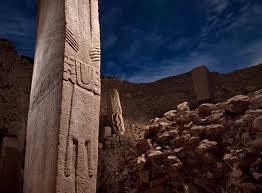
The 'tail' end of something begins the process of ?
The author's opinion on that U-shape:..."Having examined the belt buckle glyph at some length, it is this author's opinion that it represents the principle components of a comet. The circle is its head, or nucleus, and the U-shape is the bow shock that bends around the leading edge of the nucleus and trails away as the halo. The upright prongs denote three separate tails, with multiple tails being a common feature of comets." Among others try ''buckle''.
''Centaurs is the name given to small bodies in the outer solar system that have the characteristics of both comets and asteroids.'' ['Tipping Point' / S12 EP129].

Bird pendant.
And/or: During an excavation in the small village of Tvååker in Halland County, Sweden, archaeologists made a significant discovery: a large Viking Age burial site! They uncovered 139 graves containing human and animal bones, costume jewelry, clay pots, bonfires, and shipwrecks. This find may represent just a portion of what remains to be discovered at the site.
The finds include an Arabic silver coin known as an Abbasid, dated to AD 795-806, and discovered in the ship-shaped mound; a gilded bird pendant from the largest ship-shaped stone setting; single shell brooches, both gilded and in bronze; bronze and iron ring belts; several blue beads (from decoration on items, rather than part of necklaces); and several hundred ceramic vessels; as well as the burnt remains of humans and animals found in the cremation layer associated with a funeral pyre.
Ceramic analysis of the 246 vessels, which were found across 88 graves, has revealed that, while many were imported, several examples were locally produced in the Tvååker area. This may represent the earliest production of this type of goods on the west coast of Sweden.
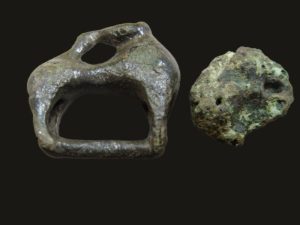
Horse biting its tail buckle.

Snake brooch.
Another grave good of note is a small fragment of a box brooch depicting a horse biting its tail, for which a parallel has been found in a rich shaman’s grave on Fyrkat, Denmark. In total, four items made of silver, 74 of bronze, and 72 of iron were found in the graves. These burial goods provide clear evidence that the area was home to a wealthy Viking Age aristocracy.....
"There was also another item that featured a depiction of a horse biting its own tail. With this, a parallel could be found with a round buckle discovered in a shaman's grave at Fyrkat, Denmark."
"Another notable artifact is an equal-armed brooch – a type of jewelry that was worn by the Viking Age elite in the 9th century. This type of brooch has also been found in Birka, Uppåkra in southern Sweden, and Staraya Ladoga in Russia, for example."
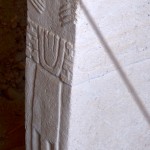
Have a closer look. Three pronged 'foot' within a U-turn? Question. Duck or goose? Go back to Part 1,

Birds 'foot' for a 'navel'? lion cloth? Under ''ones belt''? Try ''Running the fields'' or ''Sed Jubilee'' to enlarge. And/or: The alternative name - for the Lynx constellation {now in disuse} was the Tiger - and with others it was the Little Fox with the Goose." [Page 280]. All as a means...? 'Spots and stripes'?
Question. When ALL the available information {keys?} are assessed - what do you think? Clue. Recall what the 'trickster' character {i.e.,hare/fox/wolf etc,} in All cultures represent, i.e., as an alternative example the 'animal' {constellation?} at the 'foot' of Orion.
The author defines same as..."So why the foxes, especially as they are usually seen in indigenous mythologies as cosmic tricksters, evil twins of the true creator god, responsible ONLY for chaos and disarray in the universe." {Same book i.e., A. Collins. Emphasis, this readers}.
And/or..."Proclus's warning about the fox star {i.e.,Alcor} nibbling 'continuously at the thong of the yoke which holds together heaven and earth' {i.e.,represented within the 'Plough' constellation} - is an allusion to the fox attempting to sabotage the universes turning mechanism, which, of course, was seen to have its terrestrial point of origin wherever an axis mundi was established on the ground. The fox, if allowed to carry out its mischievous deeds, would eventually bring about the collapse of the imagined sky pole, and with it would follow the end, not just of the world, but time itself. The fact that Alcor, or Alopex, the Fox Star, was additionally seen as a 'comet' {authors hypothesis} inbound from the Pleiades is revealing indeed and conjures the idea that as a 'hair star' it might have been seen as responsible for this perceived cosmic catastrophe." [Same book. A. Collins]. Try ''yoke''.
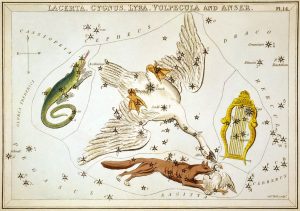
In the late 17th century, the astronomer Johannes Hevelius created Vulpecula. It was originally known as Vulpecula cum ansere ("the little fox with the goose") or Vulpecula et Anser ("the little fox and the goose"), and was illustrated with a goose in the jaws of a fox. Hevelius did not regard the fox and the goose to be two separate constellations, but later the stars were divided into a separate Anser and Vulpecula. Today, they have been merged again under the name of the fox, but the goose is remembered by the name of the star α Vulpeculae: Anser.
And/or: It was said that the Teumessian fox had been sent by the gods (perhaps Dionysus) to prey upon the children of Thebes as a punishment for a national crime. Creon, then–Regent of Thebes, set Amphitryon the impossible task of destroying this beast. He discovered a supposedly perfect solution by using the magical dog Laelaps, who was destined to catch everything {'prey'} it chased, to catch the Teumessian fox - an animal in Greek mythology that always evaded its hunter....
Zeus, faced with an inevitable contradiction due to the paradoxical nature of their mutually excluding abilities, turned the two beasts into stone. The pair were cast into the stars and remain as Canis Major (Laelaps) and Canis Minor (Teumessian Fox).
Which one's closer to a mind set?
''The word comet derives from the Old English cometa from the Latin comēta or comētēs. That, in turn, is a romanization of the Greek κομήτης 'wearing long hair', and the Oxford English Dictionary notes that the term (ἀστὴρ) κομήτης already meant 'long-haired star, comet' in Greek. Κομήτης was derived from κομᾶν (koman) 'to wear the hair long', which was itself derived from κόμη (komē) 'the hair of the head' and was used to mean 'the tail of a comet'.''
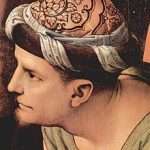 "I get my name from an ancient Greek word meaning 'long head'.. and share my name with one of santa's reindeers in the classic poem {'Theme'?}: 'Twas the Night Before Christmas'..." ['Chase the Case'].
"I get my name from an ancient Greek word meaning 'long head'.. and share my name with one of santa's reindeers in the classic poem {'Theme'?}: 'Twas the Night Before Christmas'..." ['Chase the Case'].
''Twas the Night Before Christmas, narrative poem first published anonymously in the Troy (New York) Sentinel on December twentythree, 1823.''
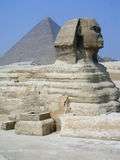
Tail of the Sphinx? ''Fissure'' to enlarge.
And/or..."Grimm cites also an old Scottish story about 'the tayl of the wolfe and the warldis end' - a reference to the world falling apart following the appearance of a wolf's tail, which we can be pretty sure is a metaphor for a comet." Same book.
Define the parts {highlighted} to understand the whole.
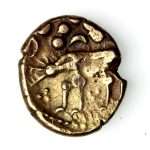
Bird on the rump of a Celtic wolf. 'Dunghill'?
Refresher: ''Centaurs is the name given to small bodies in the outer solar system that have the characteristics of both comets and asteroids.'' ['Tipping Point' / S12 EP129].
'Bull slayer'?
Hence..."Gokihar ably takes the place of the Fenris Wolf in the Norse myths, although in the Bundahishn there is a strange twist - the comet, or bolid, personified as a supernatural wolf, actually becomes a cleansing agent, clearing away the wicked in order to make the world 'immortal and forever everlasting'. " [Same book]. See it? Can you see what the author cannot.
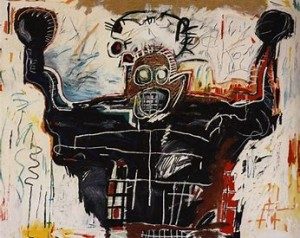
''Trickster'' or just someone saying BOO!

King and Queen or just a pair of 'tricksters'?
Another definition of same {broader view?}..."It is no light task for me to write about the figure of the trickster in American - Indian mythology within the confined space of a commentary. When i first came across Adolf Bandelier's classic on this subject, 'The Delight Makers,' many years ago, I was struck by the European analogy of the carnival in the mediaeval Church, with its reversal of the hierarchic order, which is still continued in the carnivals held by student societies today. Something of this contradictiveness also inheres in the mediaeval description of the devil as 'simia dei' {the ape of god}, and in his characterization in folklore as the 'simpleton' who is 'fooled' or 'cheated'. A curious combination of typical trickster motifs can be found in the alchemical figure of Mercurius; for instance, his fondness for sly jokes and malicious pranks, his power as a shape - shifter; his dual nature, half animal, half divine, his exposure to all kinds of tortures, and - last but not least - his approximation to the figure of a saviour. These qualities make Mercurius seem like a daemonic being resurrected from primitive times, older even than the Greek Hermes. His rogueries relate him in some measure to various figures met with in folklore and universally known in fairy tales; Tom Thumb, Stupid Hans, or the buffoon-like Hanswurst, who is an altogether negative hero and yet manages to achieve through his stupidity what others fail to accomplish with their best efforts." [From the chapter entitled 'On the Psychology of the Trickster Character' by C. Jung - within the book 'The Trickster' by P. Radin]. Try ''feast of fools'' and/or ''Feast of the Tail''.
Mr Potato Head?
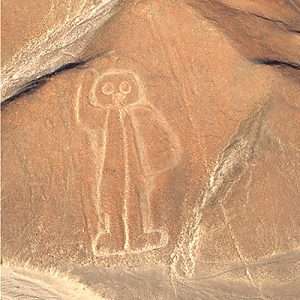
A group of owls is called a parliament.

Valdivian stone votive owl.
Neolithic equivalent? "...The males are all dancing and either disguised in animal skins or part animal themselves. There are three in the French Pyrenean cave of Trois Freres. One has a bison's head, and plays a musical instrument in the middle of a herd of bison, and one has the horned head of some similar animal. The third is the famous ''Sorcerer'', a form with the head of a horned beast, the eyes of an owl or cat, the legs and body of a man, the tail of a horse or wolf and the genitals of male feline....Scholars have variously interpreted all these as gods or spirits, as priests or witch doctors, or as hunters disguised as animals to deceive their quarry. As with all the Palaeolithic images {archetypes?}, we lack the means to translate the artists message." ['The Pagan Religions of the Ancient British Isles'].
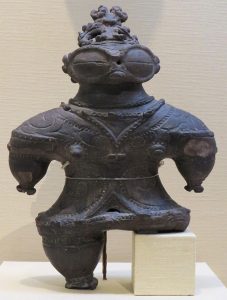
Common factors.
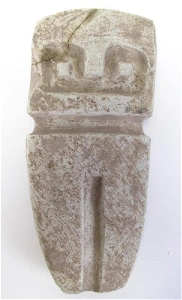 Ceramic phase A of the Valdivia was long thought to be the oldest pottery produced by a coastal culture in South America, dated to 3000-2700 BCE. In the 1960s, a team of researchers proposed there were significant similarities between the archeological remains and pottery styles of Valdivia and those of the ancient Jōmon culture, active in this same period on the island of Kyūshū, Japan). They compared both decoration and vessel shape, pointing to techniques of incising. The Early to Middle Jomon pottery had antecedents dating 10,000 years, but the Valdivia pottery style seemed to have developed rather quickly.[6] In 1962 three archeologists, Ecuadorian Emilio Estrada and Americans Clifford Evans and Betty Meggers suggested that Japanese fishermen had gotten blown to Ecuador in a storm and introduced their ceramics to Valdivia at that time.[7] Their theory was based on the idea of diffusion of style and techniques.[8]
Ceramic phase A of the Valdivia was long thought to be the oldest pottery produced by a coastal culture in South America, dated to 3000-2700 BCE. In the 1960s, a team of researchers proposed there were significant similarities between the archeological remains and pottery styles of Valdivia and those of the ancient Jōmon culture, active in this same period on the island of Kyūshū, Japan). They compared both decoration and vessel shape, pointing to techniques of incising. The Early to Middle Jomon pottery had antecedents dating 10,000 years, but the Valdivia pottery style seemed to have developed rather quickly.[6] In 1962 three archeologists, Ecuadorian Emilio Estrada and Americans Clifford Evans and Betty Meggers suggested that Japanese fishermen had gotten blown to Ecuador in a storm and introduced their ceramics to Valdivia at that time.[7] Their theory was based on the idea of diffusion of style and techniques.[8]
Their concept was challenged at the time by other archaeologists, who argued that there were strong logistical challenges to the idea that Japanese could have survived what would have been nearly a year and a half voyage in dugout canoes. The cultures were separated by a distance of 15,000 km (8,000 nautical miles).[6] Researchers argued that Valdivia ceramics (and culture) had developed independently, and those apparent similarities were a result simply of constraints on technique, and an "accidental convergence" of symbols and style.
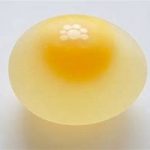
Where have you seen it before?
Side step: ''I am Khons....I am the only one. The fruit of the gods...The god who does not die on the day of rams {Aries?}, when semen is taken away from this spirit. {probably the 15th of the month when the moon begins to wane - semen is lost and virility declines..A prelude to renewal and fullness}...A later text identifies this waxing and waning of khons with a bull and ox:. Rejuvenation = full moon {bullish}. When old = ox = darkness: The waxing moon brings light, causes the bulls to cover, brings the cows in calf, and causes the 'egg' to grow in the body.'' [Page 78 'Hathor Rising' / A. Roberts].
'Ploughing' link? but not hoeing?
Venus? 8 beams?
Working example: ''The first point of Aries defines the ecliptic coordinate of (0°, 0°). It is on the celestial equator at both the left and right extremes of the sky chart, with the ecliptic (the orange dotted sine curve) passing through it.''
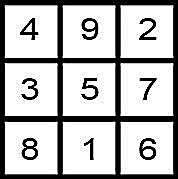
Saturn?

Remedy?
Refresher: ''Fifteen represents the zenith of lunar power, and its relation to the moon can be deduced from the name of an old German measure called Mandel, 'little moon, part of a moon', which consisted of 15 items such as eggs or other small things....Sacred to Ishtar {'5'} + sum of first five integers as well as product of two sacred numbers {3x5} + quarter of 60 - highest number {of god} in Babylon culture...'' ['Mystery of Numbers'].
''Chinese New Year, also called Lunar New Year, annual 15-day festival in China and Chinese communities around the world that begins with the new moon that occurs sometime between January 21 and February 20 according to Western calendars. Festivities last until the following full moon. It's a time to worship ancestors, exorcise evil spirits and pray for good harvest. Today it's celebrated also by Chinese communities outside the country. Lion dance, dragon dance, temple fairs, flower market shopping and so on are just a few of these rich and colourful activities.''
2023 = Year of the Rabbit. Hare?
And/or: ''Swithin's Day, also called St. Swithun's Day, (July fifteenth), a day on which, according to folklore, the weather for a subsequent period is dictated. In popular belief, if it rains on St. Swithin's Day, it will rain for 40 days, but if it is fair, 40 days of fair weather will follow...Swithun (or Swithin; Old English: Swīþhūn; Latin: Swithunus; died 863 AD) was an Anglo-Saxon bishop of Winchester and subsequently patron saint of Winchester Cathedral. His historical importance as bishop is overshadowed by his reputation for posthumous miracle-working.''
''A solstice occurs when "Earth arrives at the point in its orbit where the North Pole is at its maximum tilt [about 23.5 degrees] toward the Sun, resulting in the longest day and shortest night of the calendar year,"
 Something hinted at: "It was a Boat of Glass....'Caer Wydr' in our tongue, for I heard many tales of such vessels upon the Sea's of Annwn. A thumb's height from stern to bow, it was colourless crystal {'white stone'?} - clear and perfect as spring water through moonlight...Merlyn gave me a tiny box made of apple wood carved with herb designs, and inlaid on the cover with a crescent moon of pearl." [Page 253 'The 21 Lessons of Merlyn: A Study of Druid Magic and Lore']. Among others try ''thumb'' / ''glass''.
Something hinted at: "It was a Boat of Glass....'Caer Wydr' in our tongue, for I heard many tales of such vessels upon the Sea's of Annwn. A thumb's height from stern to bow, it was colourless crystal {'white stone'?} - clear and perfect as spring water through moonlight...Merlyn gave me a tiny box made of apple wood carved with herb designs, and inlaid on the cover with a crescent moon of pearl." [Page 253 'The 21 Lessons of Merlyn: A Study of Druid Magic and Lore']. Among others try ''thumb'' / ''glass''.
Side note: ''The worlds largest herb is the Banana plant.'' ['The Chase'].
''Manzano and Goldfinger are types of yellow curved banana.''
''Manzano bananas taste sweet with hints of apple and strawberry. Unlike a normal banana, this variety will turn black when ripe and tastes best when it has black spots. "Manzano" is Spanish for "apple."

'120' in total {one hundred and twenty}. And/or: ''Authentic rongorongo texts are written in alternating directions {'180'}, a system called reverse boustrophedon. In a third of the tablets, the lines of text are inscribed in shallow fluting carved into the wood. The glyphs themselves are outlines of human, animal, plant, artifact and geometric forms. Many of the human and animal figures, such as glyphs 200 and 280 , have characteristic protuberances on each side of the head, possibly representing eyes.'' ['Strangest Things' / S2 EP10].
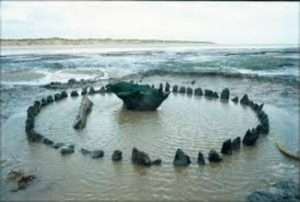
Seahenge. 'Wood' and 'stone' as a means.....
Side note: ''A few inscriptions appear carved into stones on Easter Island, and there are twentysix wooden objects with texts in Rongorongo on them that were collected on the island during the 19th century. They are now in museums and private collections around the world. Only half of the texts are in good condition and are believed to be authentic. According to oral tradition the script was also written on banana leaves with obsidian flakes or small shark teeth, however no examples survive.....The name Rongorongo means "to recite, to declaim, to chant out" in Rapa Nui, the native language of Easter Island. This possibly comes from the expression kohau motu mo rongorongo (lines incised for chanting out)....It is not known when Rongorongo was invented or by whom. A few of the wooden tablets with inscriptions in have been dated, and the oldest dates back to the early 17th century....Rongorongo was used until the 1860s, after which knowledge of the script was lost. However during the 1880s a group of elders devised a version of the script called ta'u to decorate carvings to make them more valuable.''
''Little'' to enlarge.
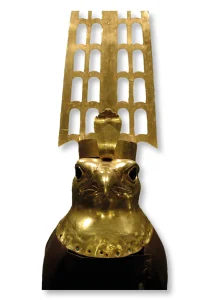
Prior to the discovery of the Main Deposit, Quibell had unearthed other spectacular finds in the temple area at Hierakonpolis. The first was a superbly made sheet-gold and copper statue of Horus – probably dating from the Sixth Dynasty (c.2345-2323 BC) of the Old Kingdom, furnished with lifelike obsidian eyes and a tall, double-plumed headdress. Quibell discovered it in a pit dug below the floor of one of the temple’s five chambers.
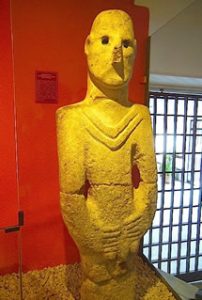
Obsidian for eyes. 'Jewels'?
Obsidian (/əbˈsɪdi.ən, ɒb-/ əb-SID-ee-ən ob-)[5] is a naturally occurring volcanic glass formed when lava extruded from a volcano cools rapidly with minimal crystal growth. It is an igneous rock.[6] Produced from felsic lava, obsidian is rich in the lighter elements such as silicon, oxygen, aluminium, sodium, and potassium. It is commonly found within the margins of rhyolitic lava flows known as obsidian flows. These flows have a high content of silica, giving them a high viscosity. The high viscosity inhibits the diffusion of atoms through the lava, which inhibits the first step (nucleation) in the formation of mineral crystals. Together with rapid cooling, this results in a natural glass forming from the lava.[7]
Obsidian is hard, brittle, and amorphous; it therefore fractures with sharp edges. In the past, it was used to manufacture cutting and piercing tools, and it has been used experimentally as surgical scalpel blades.[8] The Natural History by the Roman writer Pliny the Elder includes a few sentences about a volcanic glass called obsidian (lapis obsidianus), discovered in Ethiopia by Obsidius, a Roman explorer.[9][10][11][12]
Obsidian is mineral-like, but not a true mineral because, as a glass, it is NOT crystalline; in addition, its composition is too variable to be classified as a mineral.
Dragonglass?
AND/OR: Man’s current delusion is an over valuation of the intellect. That which has given him so much and enabled him to transform the conditions of his being by technological wonders. Yet his inherent psychic unbalance is projected forth into his environment, that ‘vegetable glass’ in which he sees his own image.....
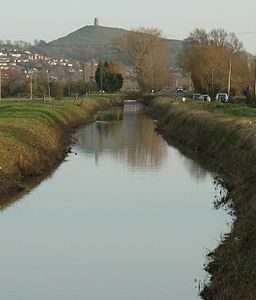
Isle of 'glass'.

Handle mirror with Leda and the swan {in the Louvre} .
Most of the ancient Titans were born of the sea, and the hideous form is but a distortion of their original beauty. The evil and ugliness is in the eye of the beholder...This is resumed in the tradition of the messenger of the Holy Grail, who appears alternately as a fair damsel or a loathly hag. Hero knights such as Gawain married such feminine figures, who were under some kind of enchantment wherein they had to be ugly for at least part of the time. Their restoration to permanent beauty depended on the attitude of the questing knight who courted them. To the pure all things are pure—to the ugly all things are ugly. Blake’s ‘vegetable glass’ reflects to us our true condition, and the mirror is essentially a device of the feminine, reflective principle. It is a tool of ruthlessly honest self-revelation, not of vanity.....{The works of Paracelsus are particularly mentioned, and also magic mirrors (‘looking glasses of diverse virtues’) or crystal specula, bells, lamps and songs—seemingly disparate and pointless objects. However, a glass enables vision of other planes of being; a bell attracts the attention of beings on other levels; lamps act as a focus for spiritual work and the mediation of spiritual beings; and ‘artificial songs’ or songs of the magical art are the application of harmonic principles to group endeavour. Michael Maier, and other Rosicrucians of the period, spent much effort on creating symbolic canons and fugues}.

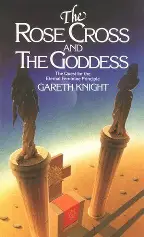 It is a valuable exercise therefore to re-evaluate all the ancient powers of primeval mythology, particularly those associated with the sea and night.....Many have semi-serpent forms {'shark'?}; sometimes figured as fish tails like mermaids or mermen, or otherwise like dragons. The Pelasgian creation myth is of particular interest. The Pelasgians were an early Greek people who claimed that they originally sprang from dragons’ or serpents’ teeth—and of no ordinary serpent or dragon either, but of the primal Ophion. Robert Graves suggests that they may have been the neolithic ‘Painted Ware’ people of c. 3500 Bc. According to mythology the first ever divine being was a goddess, named Eurynome, a kind of primal Aphrodite who arose naked out of the sea of nothingness." {Page 57}.
It is a valuable exercise therefore to re-evaluate all the ancient powers of primeval mythology, particularly those associated with the sea and night.....Many have semi-serpent forms {'shark'?}; sometimes figured as fish tails like mermaids or mermen, or otherwise like dragons. The Pelasgian creation myth is of particular interest. The Pelasgians were an early Greek people who claimed that they originally sprang from dragons’ or serpents’ teeth—and of no ordinary serpent or dragon either, but of the primal Ophion. Robert Graves suggests that they may have been the neolithic ‘Painted Ware’ people of c. 3500 Bc. According to mythology the first ever divine being was a goddess, named Eurynome, a kind of primal Aphrodite who arose naked out of the sea of nothingness." {Page 57}.
Side note: Leda was seduced by Zeus. As the myth developed, it appeared that on a single night Zeus, in the guise of a swan, lay with Leda, who conceived Polydeuces (Pollux) and Helen "of Troy", and her mortal husband, Tyndareus, king of Sparta, lay with his wife too, with whom she conceived Castor and Clytemnestra. Thus one set of twins were wholly mortal, the other set half-immortal. Homer (Odyssey XI, 298) gives a simpler earlier version.
And/or: ''Bo austrophedon /ˌbuːstrəˈfiːdən/ [1] is a style of writing in which alternate lines of writing are reversed, with letters also written in reverse, mirror-style. This is in contrast to modern European languages, where lines always begin on the same side, usually the left.

Herdsman or ploughman. Ploughshare?
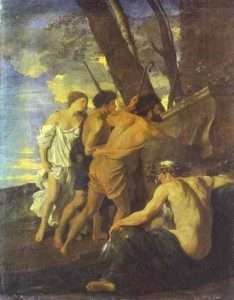 The original term comes from Ancient Greek: βουστροφηδόν, boustrophēdón, a composite of βοῦς, bous, "ox"; στροφή, strophḗ, "turn"; and the adverbial suffix -δόν, -dón, "like, in the manner of" – that is, "like the ox turns [while plowing]".[2] It is mostly seen in ancient manuscripts and other inscriptions. It was a common way of writing on stone in ancient Greece,[3] becoming less and less popular throughout the Hellenistic period. Many ancient scripts, such as Etruscan, Safaitic, and Sabaean, were frequently or even typically written boustrophedon.''
The original term comes from Ancient Greek: βουστροφηδόν, boustrophēdón, a composite of βοῦς, bous, "ox"; στροφή, strophḗ, "turn"; and the adverbial suffix -δόν, -dón, "like, in the manner of" – that is, "like the ox turns [while plowing]".[2] It is mostly seen in ancient manuscripts and other inscriptions. It was a common way of writing on stone in ancient Greece,[3] becoming less and less popular throughout the Hellenistic period. Many ancient scripts, such as Etruscan, Safaitic, and Sabaean, were frequently or even typically written boustrophedon.''
Continued: ''Except for a few possible glyphs cut in stone (see petroglyphs), and one possibility on barkcloth, all surviving secure texts are inscribed in wood. According to tradition, the tablets were made of toromiro wood. However, Catherine Orliac (2005) examined seven objects (tablets B, C, G, H, K, Q, and reimiro L) with stereo optical and scanning electron microscopes and determined that all were instead made from Pacific rosewood (Thespesia populnea); the same identification had been made for tablet M in 1934. This 15-meter tree, known as "Pacific rosewood" for its color and called makoꞌi in Rapanui, is used for sacred groves and carvings throughout eastern Polynesia and was evidently brought to Easter Island by the first settlers.''
A working example: {i.e., in respect of a mind set}: ''Each tree or plant for the Druids, had numerous spiritual and magical associations with it: The Birch = New beginnings. The Rowan = Protection. The Willow = Intuition. The Ash = Interconnection. The Oak = Strength. The Holly = Balance. The Hazel = Wisdom. The Apple = Abundance. The Yew = Transformation.
So to seek the above energies that the tree represented to be applied into their own life's, a Druid if he was seeking {say} 'abundance' would eat apples, use a wand {in ritual} made from apple, meditate under an apple tree, etc etc.'' [Page 68 'Idiots Guide to Paganism' / C. McColman].
Side note: ''The Imperial State Crown contains four pearls that are said to have been used as earrings by Elizabeth I.'' ['The Chase' / 2018].
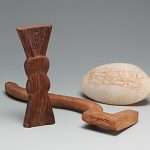 And/or: The 'crystal stone star' {''of wonder''} as defined by K. Nichols that 'led' the three wise men to the 'childs' manger. That 'divine' one {'bit'?}. Eight spiked. Fourteen generations mentioned. As well as the word 'Octagon'. Manger = N/E aspect. Sixteen steps lead down into that place of 'birth'. Just as there was 16 steps that led to the 'tomb' of the ''golden child''. [4th Sunday of Advent / Magdala / Israel / 2021].
And/or: The 'crystal stone star' {''of wonder''} as defined by K. Nichols that 'led' the three wise men to the 'childs' manger. That 'divine' one {'bit'?}. Eight spiked. Fourteen generations mentioned. As well as the word 'Octagon'. Manger = N/E aspect. Sixteen steps lead down into that place of 'birth'. Just as there was 16 steps that led to the 'tomb' of the ''golden child''. [4th Sunday of Advent / Magdala / Israel / 2021].
Coincidence?
''Pearl''? 'Menit {menat} necklace' link?

Flag of Morocco. S/W?
''According to Samsung's founder, the meaning of the Korean hanja word Samsung (三星) is "three stars". The word "three" represents something "big, numerous and powerful",[13] while "stars" means "everlasting" or "eternal", like stars in the sky.[14][15]
Sarmoung Brotherhood?
And/or: ''The sails, keel and stern are represented in three separate constellations belonging to the Argo.'' ['The Chase'].
''Steering by the stars''. {Bradley Walsh}.
Side note: Refresher. Recall Neils Bohr's discipline {as ONE example} of choosing the right words within ones vocabulary to define questions in order to arrive at possible answers, i.e.,''in the beginning was the word; and the word was...
'The star of your being is rising'.
''Westward leading still proceeding, guide us to thy......
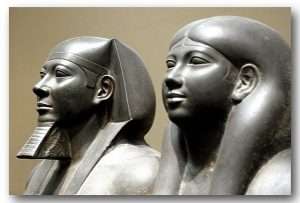
Headgear = 'Twin horned'?
From a different perspective: ''This solar seed rhythm of renewal also involves Isis with Hathor and the Pharaoh, as seen in two different scenes in the 19th Dynasty temple of Seti I at Abydos....being carried aloft on a chair {pallet/sledge?}....'You are established on the Throne like the Son of Isis. Lord of the two lands...You are the seed of the bull-of-his-mother, who created you in the likeness of his body. The womb of Isis has made him to be heir to the throne of Atum'. Now Seti, the reigning king, is counted among those mighty ones of the past known as 'the living kas', who live in him by virtue of the royal seed, carried in the womb of Isis, that courses through the generations.'' [Page 93 'Hathor Rising' / A. Roberts].
'Cattle' of a manger?
And/or: ''Most of the important aspects of 'magic' are those pieces of NEW information, that are recieved, the intuitive guesses, the solution to a problem, RATHER than your commands or requests to other 'beings'. The answer has to be of more use than the question!'' [ Page 46 'The Path Through the Labyrinth' / M. Green].
REFRESHER: ''It is often said, particularly in regard to the stories of the quest for the Holy Grail, that it is essential to ask the right question.''

'T' ?

Celtic wolf. Bird on its rump end. Teeth for a 'key'? West?
Apply the above to get a ''hang'' on the following: ''The object before which the canine god stands is known as the shedshed because in the Pyramid Texts an identically shaped sign is used to determine this word. Specifically, the deceased king is said to ascend to the sky upon the shedshed and to rise like Horus, who is over the shedshed of heaven. Furthermore, in the Middle Kingdom, Wepwawet was referred to as ‘Lord of the shedshed. Like the figure of Wepwawet, the identity of the shedshed is unclear. Representative examples of the shedshed from the protodynastic period until the end of the Old Kingdom are presented chronologically on the Narmer macehead, the symbol consists of a thin hook that simply extends the narrow baseline upon which the canid stands. However, on the Narmer palette and Scorpion macehead, the projection in front of the animal begins to expand, as does the substrate beneath it. Inscribed seals from the reign of Djer in the First Dynasty show that the upturned section then becomes fully autonomous, moving ahead of the canine, which now stands on a separate baseline.
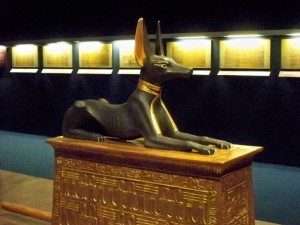
Cousin.
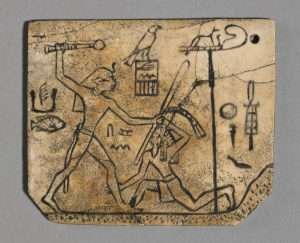
Stretching to go East? Uphill?
The object continues to maintain its hooked appearance; in one example, it consists of a long tubular extension {swollen?} that then curves up and back, while in another, the initial section is shortened to produce a stouter shape {''bulbous''}. This last configuration is repeated in later examples ascribed to Den, Mer-Neith, and Qaa. An ivory label from the reign of Den is also the first Wepwawet standard to incorporate a cobra, which rears at the junction between the baseline and the shedshed; the snake did not become a common feature of the sign until after the Third Dynasty, but once established it was usually positioned so that its body either attached to, or emerged from, the base of the shedshed.''
Shedload?
Question. Whats the remedy for a parched throat?
'A Different Christianity' / R. Amis.

Right foot {S/W}. Left foot {S/E}. 'Hole' = void/Gap. Question. 'Fish' = Upstream or Downstream? And/or: ''The king’s name appears above the scene in a serekh, or ‘palace façade’..... Later pharaonic art attributed divinity to anything mounted on this sledge shape....The ‘label’ is said to come from Abydos – whence many such ivory and bone labels have derived.... The scene is framed within a desert landscape – with the hill rising behind the enemy { BUT in front of 'King'. Hindsight/foresight} - perhaps representing the wild Eastern Desert, as the sign later used to write the word ‘east’ appears as a sort of caption.'' Any 'Antelope'?
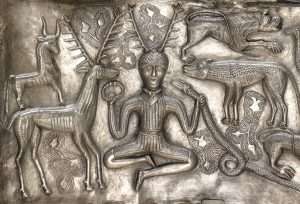
Seated on what?
And/or: ''Ivory label for a sandal: It is well-preserved and restored from three fragments, with a hole for attachment at the top right-hand corner{N/E?}. The two lower corners have been cut off at an angle {'fortyfive' degrees}. On the front surface is an incised scene showing the king Den with an upraised mace, about to strike a captive. The king's name is written before him, in the centre of the top of the label. He wears a bull's tail, symbolic of fertility and ferocious power. Instead of a crown, however, Den wears an archaic version of a royal headcloth, with the rearing neck and head of a royal uraeus cobra at his forehead.
That the enemy is an Easterner is indicated by his long locks and pointed beard, which resemble those on later depictions of Asiatic foes. On the right is the standard of Wepwawet and an inscription. Behind the figure of the king are three signs giving the name of the official Inka. The reverse side of the label bears an incised picture of a pair of sandals, indicating the type of object to which the label was attached.''
Refresher: East is a beginning, west an ending.
'Swollen neck'?
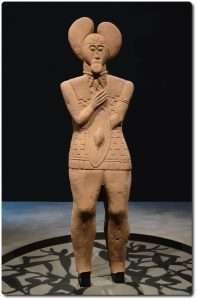
Sad or joy?
A working example: ''If one makes a synopsis of all the descriptions and alchemical pictures of Mercurius, they form a striking parallel to the symbols of the self derived from other sources....Mercurius as the lapis is a symbolic expression for the psychological complex which i have defined as the self. Similarly, the Christ figure must be viewed as a self symbol, and for the same reasons...Images that can be directly experienced....Christ as the archetype of consciousness and Mercurius as the archetype of the unconscious. As Cupid and Kyllenios, he tempts us out into the world of sense; he is the benedicta viriditas (the “blessed greenness”) and the multi flores of early spring, a god of illusion and delusion of whom it is said: 'He is found in the vein swollen with blood'. He is at the same time a Hermes Chthonios and an Eros, yet it is from him that there issues the 'light surpassing all lights'....'' [Page 246/7 'Alchemical Studies' / C. G. Jung].
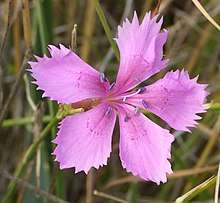
'Five'?
''An ancient Greek magical concept for your guardian spirit, your Daimon is your Genius: the primal life force that pulses from the root of your being. According to Carl Jung, your Daimon is your personal spark of the divine, akin to the concept of a Higher Self or Holy Guardian Angel. Jung taught that the purpose of being human is figuring out how to become the messenger of your unique divine spark, and offering your Genius to others as a form of medicine for vitalizing the collective...And/or: In alchemy, experiencing the benedicta viriditas (the “blessed greenness”) is likened to discovering an inner source of eternal springtime, a sacred garden of curative plants and flowers that forever bloom with verdant lushness. The blessed greenness is the secret joy of the alchemist making first contact with an infinite wellspring of divine love. Forging a connection with your daimon awakens this sense of benedicta viriditas in your heart.'' [Miranda / internet].
Side note: ''The jabiru lives in large groups near rivers and ponds, and eats prodigious quantities of frogs, fish, snakes, snails, insects, and other invertebrates.[6] It will even eat fresh carrion and dead fish, such as those that die during dry spells, and thus help maintain the quality of isolated bodies of water.''
And/or: ''Jabirus are solitary nesters, building massive nest platforms that are used repeatedly in successive seasons. Unlike many other storks, these species are often seen in pairs in the nonbreeding season suggesting a lifelong pair bond.''
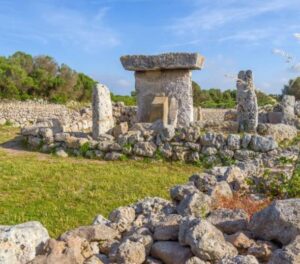
'Truncated' to enlarge.

Spirit and soul, which and why?
Continued: Inscriptions from the reign of Sanakht show the sign as a tube that curves upwards. The shedshed has yet to be identified conclusively. It has been proposed that the object represents a rolled feather, or alternatively a bag, &, possibly of animal origin. Another suggestion sees the object as a throne cushion and, by virtue of this apparent royal association, an early reference to the king’s residence in either Hierakonpolis or Abydos. '" The elongated and curving shape of the shedshed, particularly in later depictions from the Middle and New Kingdom periods, has also been compared to a sledge upon which mummies of the deceased were transported, thereby suggesting a relationship with the concept of rebirth.
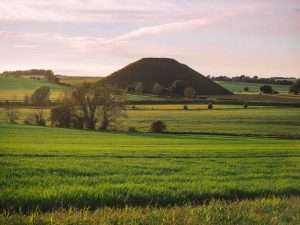
Silbury Hill.
An association with rebirth also characterises yet another common interpretation of the shedshed. When accompanying the king, the standard of Wepwawet was paired routinely with a second emblem consisting of a bi-lobed sphere from which hangs a long streamer...'' [THE SHEDSHED OF WEPWAWET / Linda Evans].
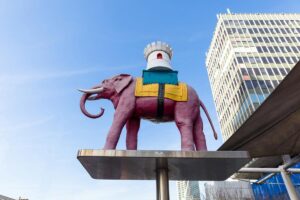
Despite all these difficulties, a four-year-old Hanno made a triumphant entry into Rome on March 19, 1514, bearing a silver castle-like structure on his back and delighting onlookers with salutes of his trunk.
Side note: "Hercules first appears in legend as a pastoral sacred king and, perhaps because shepherds welcome the birth of twin lambs, is a twin himself. His characteristics and history can be deduced from a mass of legends, folkcustoms and megalithic monuments. He is the rain-maker of his tribe and a sort of human thunder-storm. Legends connect him with Libya and the Atlas Mountains; he may well have originated thereabouts in Palaeolithic times. The priests of Egyptian Thebes, who called him 'Shu', dated his origin as '17,000 years before the reign of King Amasis' {26th Dyn}. He carries an oakclub, because the oak provides his beasts and his people with mast and because it attracts lightning more than any other tree. His symbols are the acorn; the rock-dove, which nests in oaks as well as in clefts of rock; the mistletoe, or loranthus: and the serpent. All these are sexual emblems. The dove was sacred to the Love-goddess of Greece and Syria; the serpent was the most ancient of phallic totem-beasts; the cupped acorn stood for the glans penis in both Greek and Latin; the mistletoe was an all-heal and its names viscus (Latin) and ixias (Greek) are connected with vis and ischus (strength)—probably because of the spermal viscosity of its berries, sperm being the vehicle of life....
'Seventeen'.
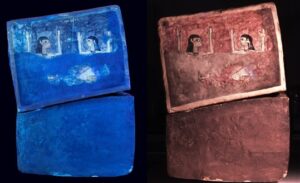
'Feet' of the Qurna Queen.
This Hercules is male leader of all orgiastic rites and has twelve archer companions, including his spear-armed twin, who is his tanist or deputy. He performs an annual green-wood marriage with a queen of the woods, a sort ofMaid Marian. He is a mighty hunter and makes rain, when it is needed, by rattling an oak-club thunderously in a hollow oak and stirring a pool with an oak branch—alternatively, by rattling pebbles inside a sacred colocinth-gourd or, later, by rolling black meteoric stones inside a wooden chest—and so attracting thunderstorms by sympathetic magic.  The manner of his death can be reconstructed from a variety of legends, folk customs and other religious survivals. At mid-summer, at the end of a half-year reign, Hercules is made drunk with mead and led into the middle of a circle of twelve stones arranged around an oak, in front of which stands an altar-stone; the oak has been lopped until it is T-shaped. He is bound to it with willow thongs in the 'five-fold bond'.....Taliesin's name in Welsh means 'radiant brow', a characteristic of Apollo's, but the 'Tal' syllable is often present in the primitive names of Hercules. In Crete he was Talus, the man of bronze, whom Medea killed. In Pelasgia he was the tortured Tan-talus, from whose name the word 'tantalize' derives. The Irish Tailltean Games are probably called after an agricultural Hercules the first syllable of whose name was Tal. In Syria he was Telmen. In Greece he was Atlas Telamon, and 'Atlas', like 'Telamon', was derived from the root Tla or Tal which contains the senses 'take upon oneself, 'dare', and 'suffer'. Dr. MacCulloch suggests that 'Taliesin' is also a divine name and that the swallowing of the grain of corn by the black hen in the Romance of Taliesin proves Taliesin to have been a Barley-god.....
The manner of his death can be reconstructed from a variety of legends, folk customs and other religious survivals. At mid-summer, at the end of a half-year reign, Hercules is made drunk with mead and led into the middle of a circle of twelve stones arranged around an oak, in front of which stands an altar-stone; the oak has been lopped until it is T-shaped. He is bound to it with willow thongs in the 'five-fold bond'.....Taliesin's name in Welsh means 'radiant brow', a characteristic of Apollo's, but the 'Tal' syllable is often present in the primitive names of Hercules. In Crete he was Talus, the man of bronze, whom Medea killed. In Pelasgia he was the tortured Tan-talus, from whose name the word 'tantalize' derives. The Irish Tailltean Games are probably called after an agricultural Hercules the first syllable of whose name was Tal. In Syria he was Telmen. In Greece he was Atlas Telamon, and 'Atlas', like 'Telamon', was derived from the root Tla or Tal which contains the senses 'take upon oneself, 'dare', and 'suffer'. Dr. MacCulloch suggests that 'Taliesin' is also a divine name and that the swallowing of the grain of corn by the black hen in the Romance of Taliesin proves Taliesin to have been a Barley-god.....

Tutankhamun's head rest. 'Raised' by Shu.
If one looks carefully again at the names of the fifteen consonants of the Boibel-Loth, or the Babel-Lota, one notices clear correspondences with Greek legend. Not only 'Taliesin' with 'Talus', and 'Teilmon' with 'Telamon', but 'Moiria' with the 'Moirae', the Three Fates; and 'Cailep' with 'Calypso', daughter of Atlas, whose island of Ogygia—placed by Plutarch in the Irish Seas—was protected by the very same enchantment as Morgan le Faye's Avalon, Cerridwen's Caer Sldi, or Niamh of the Golden Hair's 'Land of Youth'...." ['The White Goddess'].
And/or: The figure, pronounced with a glottal stop in the middle, was the principal deity of the people of the Pacific island of Rurutu....Containing the divine: a wooden sculpture made of sandlewood of the Pacific god A’a....The original wooden figure is now in the collection of the British Museum, who were given both the sculpture and plaster moulds from the London Missionary Society (LMS). The LMS were presented with the work directly from the people of Rurutu in 1821 and subsequently made the plaster casts in order to explain the traditional religions of the Pacific people to their society members.
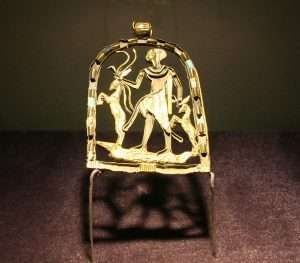
'Golden' TENT or chair?

Frieze_of_Imdugud_Anzu_grasping_a_pair_of_deer_from_Tell_Al-Ubaid.
Continued: ''Shed was a deity from ancient Egyptian religion. Popularly called "the Savior", he is first recorded after the Amarna Period.[2] Representing the concept of salvation, Shed is identified with Horus, particularly Horus the Child.[3] Rather than have formal worship in a temple or as an official cult, he appears to have been a god that ordinary Egyptians looked to save them from illness, misfortune or danger.[4] He is shown on the Metternich Stela as vanquishing danger in the form of a serpent, a scorpion and a crocodile.[5] The rise of "Savior" names in personal piety during the Amarna period has been interpreted as the popular response of ordinary people to the attempts by Akhenaten to proscribe the ancient religion of Egypt. Shed has also been viewed as a form of the Canaanite god Resheph.'' [Wiki].
Shed and Isis mentioned in the documentary - 'Blowing Up History: Egypt's Buried City' S6 EP1 - Together with: ''Folding chairs have been known to have existed since the second millennium BC. Only a few dozen ancient examples found in Europe - most of them in early medieval WOMENS burials...Symbols of high social status {'nobles'?}. Used as official insignia of bishops and representing royalty....In central Germany an iron chair found at the feet of a woman {600AD} - also buried with ''a necklace made of glass beads and a belt with dangling beads and brooches.'' [Page 10 'Archaeology' / Nov/Dec 2022].
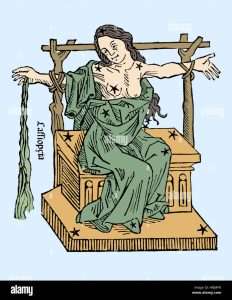
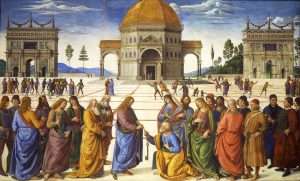 SIDE NOTE: The English word "cathedra", plural cathedrae, comes from the Latin word for "armchair", itself derived from the Greek (καθέδρα). After the 4th century, the term's Roman connotations of authority reserved for the Emperor were adopted by bishops. It is closely related to the etymology of the word chair. A cathedra is the raised throne of a bishop in the early Christian basilica.[1] When used with this meaning, it may also be called the bishop's throne. With time, the related term cathedral became synonymous with the "seat", or principal church, of a bishopric.[1]
SIDE NOTE: The English word "cathedra", plural cathedrae, comes from the Latin word for "armchair", itself derived from the Greek (καθέδρα). After the 4th century, the term's Roman connotations of authority reserved for the Emperor were adopted by bishops. It is closely related to the etymology of the word chair. A cathedra is the raised throne of a bishop in the early Christian basilica.[1] When used with this meaning, it may also be called the bishop's throne. With time, the related term cathedral became synonymous with the "seat", or principal church, of a bishopric.[1]
The word in modern languages derives from a normal Greek word καθέδρα [kathédra], meaning "seat", with no special religious connotations, and the Latin cathedra, specifically a chair with arms.
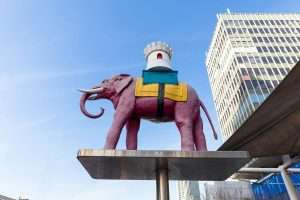 The definitive example of a cathedra is that encased within the Triumph of the cathedra Petri designed by Gian Lorenzo Bernini in 1657, and completed and installed in St Peter's Rome in 1666. As early as the 8th century, an ancient wooden chair overlaid with ivory plaques depicting The Twelve Labours of Heracles and some of the constellations, [7] was venerated as the episcopal chair of St. Peter.
The definitive example of a cathedra is that encased within the Triumph of the cathedra Petri designed by Gian Lorenzo Bernini in 1657, and completed and installed in St Peter's Rome in 1666. As early as the 8th century, an ancient wooden chair overlaid with ivory plaques depicting The Twelve Labours of Heracles and some of the constellations, [7] was venerated as the episcopal chair of St. Peter.  It is a Byzantine throne with framed fragments of acacia wood, encased in the oak carcass and reinforced with iron bands. It was long believed to have been used by the Apostle Saint Peter, but the Holy See recognises that the chair was a gift from Holy Roman Emperor Charles the Bald to Pope John VIII in 875.[8] Several rings facilitated its transportation during processions. Pope Alexander VII commissioned Bernini to build a monument to display this relic in a triumphant manner. Bernini's gilded bronze throne, richly ornamented with bas-reliefs, encloses the relic. On January 17 {'seventeen'}, 1666, it was solemnly set above the altar of Saint Peter's Basilica in Vatican City. Greater than life-sized sculptures of four Doctors of the Church form an honour guard: St. Ambrose and St. Athanasius on the left, and St. John Chrysostom and St. Augustine on the right.
It is a Byzantine throne with framed fragments of acacia wood, encased in the oak carcass and reinforced with iron bands. It was long believed to have been used by the Apostle Saint Peter, but the Holy See recognises that the chair was a gift from Holy Roman Emperor Charles the Bald to Pope John VIII in 875.[8] Several rings facilitated its transportation during processions. Pope Alexander VII commissioned Bernini to build a monument to display this relic in a triumphant manner. Bernini's gilded bronze throne, richly ornamented with bas-reliefs, encloses the relic. On January 17 {'seventeen'}, 1666, it was solemnly set above the altar of Saint Peter's Basilica in Vatican City. Greater than life-sized sculptures of four Doctors of the Church form an honour guard: St. Ambrose and St. Athanasius on the left, and St. John Chrysostom and St. Augustine on the right.
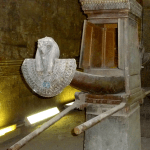
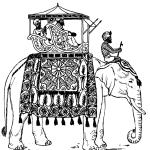 Celebrated on February 22 in accordance with the calendar of saints, the Feast of Cathedra Petri (the Feast of the Chair of Peter the Apostle) honours the founding of the church in Rome and gives thanks for the work of Saint Peter.
Celebrated on February 22 in accordance with the calendar of saints, the Feast of Cathedra Petri (the Feast of the Chair of Peter the Apostle) honours the founding of the church in Rome and gives thanks for the work of Saint Peter.
"Twentytwo"?
Stool?
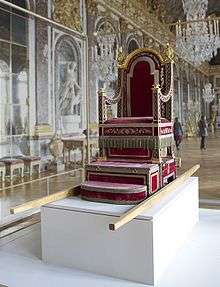
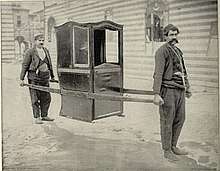 Early martyrologies indicate that two liturgical feasts were celebrated in Rome, centuries before the time of Charles the Bald, in honour of earlier chairs associated with Saint Peter, one of which was kept in the baptismal chapel of Old St. Peter's Basilica, the other at the catacomb of Priscilla.[5] The dates of these celebrations were January 18 {'eighteen'} and February 22. No surviving chair has been identified with either of these chairs. The feasts thus became associated with an abstract understanding of the "Chair of Peter", which by synecdoche signifies the episcopal office of the Pope as Bishop of Rome, an office considered to have been first held by Saint Peter, and thus extended to the diocese, the See of Rome.[9]
Early martyrologies indicate that two liturgical feasts were celebrated in Rome, centuries before the time of Charles the Bald, in honour of earlier chairs associated with Saint Peter, one of which was kept in the baptismal chapel of Old St. Peter's Basilica, the other at the catacomb of Priscilla.[5] The dates of these celebrations were January 18 {'eighteen'} and February 22. No surviving chair has been identified with either of these chairs. The feasts thus became associated with an abstract understanding of the "Chair of Peter", which by synecdoche signifies the episcopal office of the Pope as Bishop of Rome, an office considered to have been first held by Saint Peter, and thus extended to the diocese, the See of Rome.[9]
According to historian Anton de Waal, although both feasts were originally associated with Saint Peter's stay in Rome, the ninth-century form of the Martyrologium Hieronymianum associated the January 18 feast with his stay in Rome, and the February 22 feast with his stay at Antioch.[5] The two feasts were included in the Tridentine calendar with the rank of Double, which Pope Clement VIII raised in 1604 to the newly invented rank of Greater Double.
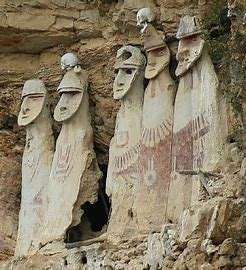
Above or below the clouds?
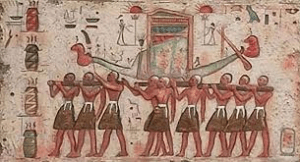
Feast of the Valley.
The relic itself is described as an oaken chair damaged by cuts and worms. The chair has metal rings attached to each side, allowing use as a sedia gestatoria. The back and front of the chair are trimmed with carved ivory. This description comes from 1867, when the relic was photographed and displayed for veneration.[5]
The cathedra is lofted on splayed scrolling bars that appear to be effortlessly supported by four over-lifesize bronze Doctors of the Church: Western doctors Saint Ambrose and Saint Augustine of Hippo on the outsides, wearing miters, and Eastern doctors Saint John Chrysostom and Saint Athanasius on the insides, both bare-headed. The cathedra appears to hover over the altar in the basilica's apse, lit by a central tinted window through which light streams, illuminating the gilded glory of sunrays and sculpted clouds that surrounds the window. Like Bernini's Ecstasy of Saint Theresa, this is a definitive fusion[7] of the Baroque arts, unifying sculpture and richly polychrome architecture and manipulating effects of light.

Fox? Face side or in profile?
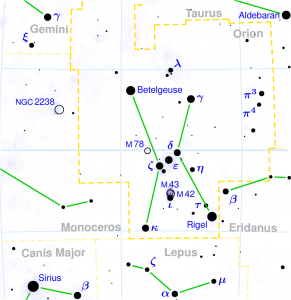
Two triangles. Fire AND water? Male/Female. Which and why? Question. Which one is the 'right way up'? Northern/Southern hemisphere?
CONTINUED: "These mythological features extend even to the highest regions of man's spiritual development. If we consider, for example, the daemonic features exhibited by Yahweh in the Old Testament, we shall find in them not a few reminders of the unpredictable behaviour of the trickster, of his pointless orgies of destruction and his self-appointed sufferings, together with the same gradual development into a saviour and his simultaneous humanization {lower/higher link. This readers input}. It is just this transformation of the meaningless into the meaningful that reveals the trickster's compensatory relation to the 'saint', which in early Middle Ages led to some strange ecclesiastical customs based on memories of the ancient 'saturnalia'. Mostly they were celebrated on the days immediately following the birth of Christ - that is, in the New Year - with singing and dancing..." [Same book].
'By hook or by crook'?
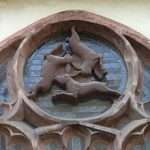
Mad whirling dance?
As one example: ''William Kemp an actor who starred as the fool in Shakespeares plays. Had ideas of his own as to what makes good comedy. He fell out with Shakespeare about what was comedic in Hamlet. Went on a mad morris dance between London and Norwich. Took nine days. Expected to entertain people more than a stage could do. 'Kemp the Man' was lost to history. No one knows what happened to him after. A footnote in history.'' ['Britains Most Historic Towns: Tudor Norwich']. Alice Roberts wonders why Norwich.
Whirling Dervishers to enlarge.

''Cross'' front and back?
Many sides {i.e.,Morris groups} have one or more fools. A fool is usually extravagantly dressed, and communicates directly with the audience in speech or mime. The fool often dances around and even through a dance without appearing really to be a part of it, but it takes a talented dancer to pull off such fooling while actually adding to and not distracting from the main dance set.
Many sides also have a beast: a dancer in a costume made to look like a real or mythical animal. Beasts mainly interact with the audience, particularly children. In some groups this dancer is called the hobby.
A tradition in Cotswold Morris is a collection of dances that come from a particular area, and have something in common: usually the steps, arm movements, and dance figures. Many newer traditions are invented by revival teams." [Wiki]. Continued elsewhere.
N.B. Winster was the ''center of the lead mining industry'' {and/or} - in the middle of the country. Try ''lead'' and/or ''navel'' to give a possible understanding to that final sentence.
Proving the validity of research OVER those first impressionable ones - {higher/lower?} therefore ''teacher'' link?
Refresher..."Gokihar ably takes the place of the Fenris Wolf in the Norse myths, although in the Bundahishn there is a strange twist - the comet, or bolid, personified as a supernatural wolf, actually becomes a cleansing agent, clearing away the wicked in order to make the world 'immortal and forever everlasting'. " [Same book]. See it? Can you see what the author cannot.
Dire Wolf? {Game of Thrones}.
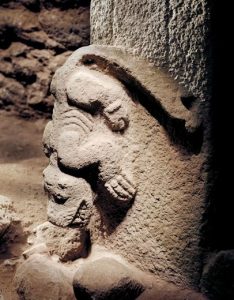 Understanding the above gives an answer to the following - OR at the very least a credible line of investigation..."The imposing central pillars in Gobekli-tepe's Enclosure D both sport wide belts, at the front of which, beneath a centrally placed belt buckle, fox-pelt loincloths have been carved, the animals hind legs and long, bushy tail extending down to knee level. Further emphasising the eastern monoliths vulpine character is the presence of on its inner face of a leaping fox, something present also on the central pillars of Enclosure B...These images of the fox, along the high level of faunal remains belonging to the red fox {Vulpes vulpes} found at Gobekli-tepe, led archaeozoologist Joris Peters, writing with Klaus Schmidt, to conclude that the interest in this canine creature went beyond any domestic usage and was connected in some way with the 'exploitation of its pelt and/or the utilization of fox teeth for ornamental purposes'. That this statement was made even before the discovery of the fox-pelt loincloths {Heb Sed link. Enlarged elsewhere} carved elsewhere {i.e.,central pillars in Enclosure D} - means that what Peters and Schmidt go on to say in the same paper, should not be ignored - for in their opinion 'a specific worship of foxes may be reflected here'. That leaping fox appear also on the central pillars of..." ['Gobekli Tepe' by A. Collins].
Understanding the above gives an answer to the following - OR at the very least a credible line of investigation..."The imposing central pillars in Gobekli-tepe's Enclosure D both sport wide belts, at the front of which, beneath a centrally placed belt buckle, fox-pelt loincloths have been carved, the animals hind legs and long, bushy tail extending down to knee level. Further emphasising the eastern monoliths vulpine character is the presence of on its inner face of a leaping fox, something present also on the central pillars of Enclosure B...These images of the fox, along the high level of faunal remains belonging to the red fox {Vulpes vulpes} found at Gobekli-tepe, led archaeozoologist Joris Peters, writing with Klaus Schmidt, to conclude that the interest in this canine creature went beyond any domestic usage and was connected in some way with the 'exploitation of its pelt and/or the utilization of fox teeth for ornamental purposes'. That this statement was made even before the discovery of the fox-pelt loincloths {Heb Sed link. Enlarged elsewhere} carved elsewhere {i.e.,central pillars in Enclosure D} - means that what Peters and Schmidt go on to say in the same paper, should not be ignored - for in their opinion 'a specific worship of foxes may be reflected here'. That leaping fox appear also on the central pillars of..." ['Gobekli Tepe' by A. Collins].
Side note: The narrator of 'Seven Ages of Britain' {Series 1. Episode 2. Enlarged elsewhere} - asks the question "Why go to such lengths to finish someone off..." - in reference to the body found in a bog that became known as the Lindow Man. Purposely killed {'sacrificed'} at the ''edge of wetlands'' - totally naked with the exception of ''a fox fur armlet'' . Neatly trimmed beard - aged between 25-30. All significant pointers {keys?} to understand it beyond ''Brutality'' and/or "a savage lifestyle'' and/or "it sorted the men from the boys''.
Analogy: 'The Beard of Knowledge'?
Try Part 1 to enlarge on the word ''sacrifice'' before that inner voice {first impressions?} suggest something else. Then try ''teacher''.
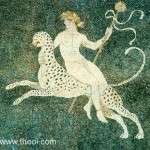
Try ''panther''.
''Sacrifice'' in relation to: "As we have said, the primitive techniques for this were blood and sacrifice and orgiastic rites but neither of these methods are valid means of spiritual progress nowadays. The evolution of consciousness has moved on and such practices would be atavistic; degrading rather than enlightening..." See Part 3.
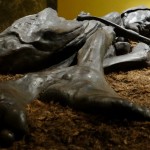
Sacrificial victim or willing participant?
"Wetlands'' in relation to: "The Agnisuryans respond to the sound. The waters ebb and flow. Let the 'magician' guard himself from drowning, at the point where land and water meet. The midway spot, which is neither dry nor wet, must provide the standing place whereon his feet are set. When water, land and air meet there is the place for 'magic' to be wrought {'fire?'}"
Refresher: "To sacrifice a 'lower' value to a 'higher' value is to give substance and power to the desire which has been 'sacrificed'. If this higher value is of a 'spiritual' order, the spiritual power is attracted by this desire, and givers to the sacrificer a power of domination over his lower states." ['Journey into the Light'].
SIDE NOTE: "I will tame the primal obsessions. Greed, anger, pride, hatred, and use them as powerful bullocks to plough the field of consciousness. Sowing the 'seed' of Om Kali Ma, transmitted to me by a skilful farmer. I will reap a vast harvest of illumination..." [Poem by Ramprasad Sen. Taken from the book 'The Path of the Priestess: A Guidebook for Awakening the Divine Feminine' / Sharron Rose]. Question. Anima/soul/ 'light'?
Apis Bull {Shadow/spirit/ 'fire'?}. As a means...?
A side step: {see above picture, - seven back i.e.,two lions?} i.e.,"the mysteries cavern of Sokaris", commonly known as 'the hidden chamber'. Of which Horus "OF the horizon" plays its part. Sokar the 'god' of the 'underworld', i.e.,something still 'unknown', represented as an aspect of the 'unconscious'.... shadow aspect, i.e.,male 'god'. 'Anima' would be represented in some form as 'female'. Hence that link to Genesis, chapter six..."The sons of god saw the 'daughters' of men, that they were fair.... who bare 'children' to them." [Recall what 'Son of' represents].
That link to the 'divine couple',i.e.,Apollo and twin sister or Sumerian equivalent, Inanna and Utu, as opposed to Jacob and Esau. Think about it, [ i.e.,"a mental state, in which spiritual perceptions were achieved, distinguishing between the 'shadow mixed with light', when the power of the imagination was mixed with reason...."]. Equilibrium being the main aim. Its main result or principle; with the observer or reader in mind. Purpose of. Benefit of.

Six?
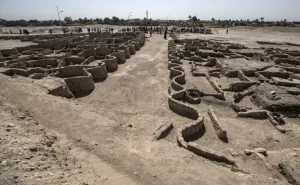
''Closed'' or 'Enclosed'?
Number symbolism equivalent..."According to ancient and Neoplatonic systems, 6 is the most perfect number as it is both the sum and the product of its parts: it is formed either by adding 1+2+3 or by multiplying 1x2x3. Furthermore it is the product of the first male {2} and first female {3} numbers. From the psychologists viewpoint, it represents a combination of analysis and synthesis in its simplest form: 2x3. It summarizes all the plane figures of geometry {point, line and triangle}, and since the cube is composed of 6 squares, it is the ideal form for any closed construction." ['Mystery of Numbers' / A. Schimmel].
''First male {shadow?} - first female {light/anima?} ALL as a means...?
N.B. ''Closed construction'' = something manifested. Representational of. Recall the numbers associated with the 'cube' - as an expression of something. Hence the link to this subjects main 'teaching' aid. Question. Which came first and WHY?
That word imagination again {two paragraphs back}. Work it out, for its true meaning, i.e.,when using it, focus on the positive stuff, as opposed to its alternative, the negative stuff, to reach a balance, in order to understand something, anything. Understanding the above therefore gives clues as to that biblical stories true 'intent' and purpose, in relation to an end result. A 'potential' yet to be realized. A work still in progress.
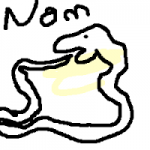
As part of that ''true poetry''. Others found throughout.
From a different perspective: ''My thesis is that the language of poetic myth anciently current in the Mediterranean and Northern Europe was a' magical' language bound up with popular religious ceremonies in honour of the moon goddess, or muse, some of them dating from the Old Stone Age, and that remains the language of TRUE poetry....but it is only fair to warn the reader that this remains a very difficult book, as well as a very queer one {'peculiar'?}, to be avoided by anyone with a distracted, tired or rigidly scientific mind...." [Forward to the book 'The White Goddess' / R. Graves].
Side note: Why a 'serpent'? Crawls on belly {horizontal?} but can strike in the vertical? Can be found in both salt and fresh water? Sheds its skin? etc. All as a means...?
Try ''poison/antidote''.
Refresher: "The children of Seth [Set] first possessed that peculiar sort of wisdom, which is concerned with the heavenly bodies",[chapter five.' The Sirius Mystery'],
"The Agnisuryans respond to the sound. The waters ebb and flow. Let the 'magician' guard himself from drowning, at the point where land and water meet. The midway spot, which is neither dry nor wet, must provide the standing place whereon his feet are set. When water, land and air meet there is the place for 'magic' to be wrought {'fire'?}."
Moses = ''Drawn from water''. Anything?
Analogy {Greek?}: Poseidon - 'Boundary' between wet and dry - whose domain was Atlantis. Ten sons {five sets of 'twins'}. The eldest - Atlas. A world {rock?} on 'his shoulders'. A representation of something. Enlarged elsewhere.

"Another interesting symbol, which later became a prime emblem of Northern Ireland, is the red hand....A myth descibes a race in which the first to reach land would win the throne {'House'} of Ulster. A certain prince called O'Neil was losing the race but cut off his hand and threw it to the shore, ensuring his hand touched land first. {Page 143 'Scota: Egyptian Queen of the Scots' / R. Ellis].
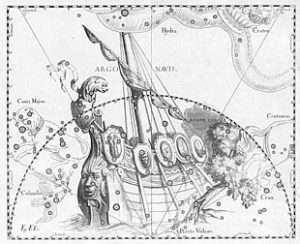
Side note: It is said that “union makes force”, and one understands by this the alliance of individual wills with a view to achieving a common aim. It is the formula for the quantitative increase of force. With respect to qualitative force, it would be appropriate to say that “unity is force”, because one is strong only in so far as there is unity of spirit, soul and body, i.e. in so far as there is virginity. It is inner conflict that renders us weak: the fact that we serve two or even three masters at the same time.
The Emerald Table of Hermes states not only the principle of universal analogy, but also that of universal force: “to accomplish the miracles of one thing”. It teaches concerning the “strongest of all powers, the force of all forces, for it overcometh every subtle thing and doth penetrate every solid substance” (Tabula Smaragdina, 9). The force taught by the Emerald Table is the unity in action of heaven and earth, for thelema (the fundamental will) “doth ascend from earth to heaven; again it doth descend to earth, and uniteth in itself the force from things superior and things inferior” (Tabula Smaragdina, 8).
"We are thinking at the edge, where the shoreline of sense meets the wild ocean of mystery." [From the book by T. Freke and P. Gandy]
S/W? i.e., as ONE example Glastonbury? Others enlarged elsewhere.
Question. What are the other 'compass' points represented by?
Question 2. JUST compass points?
Compass of the Heart?
''The inner guardian is our true North, the keeper of the charts.'' Try 'map' / 'whale'.
And/or: ''Compass'' in relation to 'encompass' / 'compassion'?
'Lexicon of Alchemy' definition of same..."Imagination is the Star in Man, the celestial or supercelestial body." [Chapter 4, of the book by D. Hauck]. Question. Fantasy? A collective one, throughout multiple generations. From its beginning to the present date?
"Planet Narnia: The Seven Heavens in the Imagination of C. S. Lewis' by Michael Ward.
Analogy of same, i.e.,with the same intent..."God will never give himself openly to the soul...unless she brings her husband, that is to say, her whole free will." [ Emphasis, this readers. Page 12, 'Meister Eckhart: From Whom God Hid Nothing' {Sermons, writings and Sayings} by David Steindl - Rast ]. Think on it, relative to 'Song of Songs'. Explained elsewhere.
Hindu equivalent, [in part]. Chiti = "The power of universal consciousness; the creative aspect of 'God' portrayed as the universal 'mother.'' [Glossary, from the book, 'Play of Consciousness' by Swami Muktananda].
OR...."Knowing the 'male' but keeping the 'female', one becomes a universal stream. Becoming a universal 'stream', one is not separated from 'eternal' virtue." [Lao - tzu in relation to 'Tao : the Watercourse Way'. Taken from chapter 6, 'The Warrior Within'].
Further Clue. Shadow = top/down. Anima/s = Bottom up. Merging of the two = Balance, relative to an understanding. As a means to a final understanding.
Refresher: ''Where good deeds are 'ships' on which to ride the waves''.
 "The Feminine guide leads the masculine personality to the discovery of the inner world, to discover the soul. This is an archetypal motif: the feminine guide leads one to the spiritual treasure, or even carries it, as Repanse de Schoye carries the Grail. According to the insights of Jungian psychology, the 'anima,' the muse or source of inner inspiration, leads one to the 'treasure' of the Self. But the anima is generally only encountered after one has encountered the personal 'shadow,' that part of every individual's personality which is self-centered, dark, essentially negative and ignorant. The Parzival legend very well substantiates Jung's psychological insights, for Parzival starts out as a self-centered, social dimwit......."[Chapter entitled 'The Path Toward the Grail: The Hermetic Sources and Structure of Wolfram von Eschenbach's Parzival' from the book, 'Alexandria'. Vol 1, by D. Fideler].
"The Feminine guide leads the masculine personality to the discovery of the inner world, to discover the soul. This is an archetypal motif: the feminine guide leads one to the spiritual treasure, or even carries it, as Repanse de Schoye carries the Grail. According to the insights of Jungian psychology, the 'anima,' the muse or source of inner inspiration, leads one to the 'treasure' of the Self. But the anima is generally only encountered after one has encountered the personal 'shadow,' that part of every individual's personality which is self-centered, dark, essentially negative and ignorant. The Parzival legend very well substantiates Jung's psychological insights, for Parzival starts out as a self-centered, social dimwit......."[Chapter entitled 'The Path Toward the Grail: The Hermetic Sources and Structure of Wolfram von Eschenbach's Parzival' from the book, 'Alexandria'. Vol 1, by D. Fideler].
"It takes two, a positive and a negative, to make an efficiently functioning psychic unit." ['The New Dimensions Red Book'. Mentioned elsewhere].

Anything offset?
Those negative ‘aspects’ represented with other key words that indicates an ‘offset to the norm’. More generally known as ‘the fall’ and its relevant importance to the wider ‘picture’. [ In their opinion ]. That fall represented...as in the stone age...with the ‘Heel ’ stone. Offset purposely as indicated in such books as...’In Search of Ancient Astronomies’. By E.Krupp.
Egyptian equivalent, the 'offset' pyramid. Explained elsewhere.

Hussein Abdul Rasoul - 'The 'Water-Boy' - whose 'heel' found the first step of 'sixteen' that led to the tomb of the 'golden child'.
Synchronistic?: ''On the morning of November 4th, 1922, a waterboy hit a strange rock with his heel as he tried to make a place to set jars of water. The sand around the rock was cleared revealing that the rock was in fact a step. Everyone was so excited as they knew that most tombs in the valley had stairways cutting into the rock. They began to clear the area of sand and gradually uncovered another step, then another, and another until a flight of steps was cleared.''
 "Somewhere along the line, the Western intellectual tradition took a wrong turn. Arguments arise over when and where this happened. Many important thinkers have concluded that the West never should have abandoned certain teachings about reality which it shared with the East. They have turned to the Oriental traditions in the hope of finding resources which may help revive what has been lost, and correct the deep psychic and spiritual imbalances of our civilization. One result of this ongoing search for a lost 'intellectual' and 'spiritual' heritage has been the rediscovery of the importance of imagination. In putting complete faith in reason, the West forgot that imagination [by way of the ''cognitive faculty''. This readers input. Explained elsewhere], opens up the soul to certain possibilities of perceiving and understanding not available to the rational mind. One of the important contemporary thinkers who have pointed in this direction is the late Henry Corbin, who has bequeathed to us the word ''imaginal.''
"Somewhere along the line, the Western intellectual tradition took a wrong turn. Arguments arise over when and where this happened. Many important thinkers have concluded that the West never should have abandoned certain teachings about reality which it shared with the East. They have turned to the Oriental traditions in the hope of finding resources which may help revive what has been lost, and correct the deep psychic and spiritual imbalances of our civilization. One result of this ongoing search for a lost 'intellectual' and 'spiritual' heritage has been the rediscovery of the importance of imagination. In putting complete faith in reason, the West forgot that imagination [by way of the ''cognitive faculty''. This readers input. Explained elsewhere], opens up the soul to certain possibilities of perceiving and understanding not available to the rational mind. One of the important contemporary thinkers who have pointed in this direction is the late Henry Corbin, who has bequeathed to us the word ''imaginal.''
As Corbin has explained in his works, the ''imaginal world'' [or mundus imaginalis] possess an independent ontological status and must be clearly differentiated from the ''imaginary'' world, which is no more than our individual fantasies. Once we lose sight of the imaginal nature of certain realities, the true import of a great body of mythic and 'religious' teachings slips from our grasp. All 'religious' traditions accord a central role to 'imagination', though not necessary by the same name." [Introduction to the book,'The Sufi Path of Knowledge' by W. Chittick].
A working example: 'The Quest of Rose: Book one. The Cosmic Keys of Our Future Becoming' / J. Houston.
Hindu equivalent [in part] Prakriti = "In Sankhya philosophy, the feminine creative principle of Reality, that gives form to the objective universe."
'On Having No Head: Zen and the Rediscovery of the Obvious' / D. E. Harding.
Together with Purusha = "The masculine principle of Reality, the spiritual ground of being." [Glossary to the book 'Play of Consciousness'].

From a different perspective: ''Dont doubt yourself with your gut feeling. You probably already know the answer. Its in there somewhere in the back of your head.'' ['The Chase' / ITV].
 Egyptian equivalent, [in part]..."Sokar is the latent spiritual principle in all living things, the spirit embedded in the deepest regions of matter that awaits arousal." [Chapter two, from the author Rosemary Clark].
Egyptian equivalent, [in part]..."Sokar is the latent spiritual principle in all living things, the spirit embedded in the deepest regions of matter that awaits arousal." [Chapter two, from the author Rosemary Clark].
"The 'Principle of Latency' which Sokar embodies was associated with the solid, vital energy of the bull, manifesting as physical potency in his role as 'Lord of the Herd'. [Chapter two, same book].
That link to Herd mentality...solution of, by way of a 'sacrifice,' i.e.,by way of an objective exercise. Benefit of, i.e.,sacrifice of the 'lower' to understand something of the 'higher'. Representational of. That final link to the ''transcendent third''.
Sokar therefore will always be 'depicted' in a 'dark' profile. Representing, as something still to be understood. Dark in relation to light. 'Unknown' relative to 'known'. Falcon relative to 'land' animals, [i.e.,as in the Egyptian example, Anubis]. That potential that the symbol of the falcon represents, [i.e.,upward / 'positive' movement / 'potential' ], latent, within Sokar.
Just as the same principle is latent within the word 'lucifer' [''the light bringer'']. Indicative of. Nothing more.
"Every light casts a shadow" ['The Zelator'].
In other words, principles not individuals. Principles of something, relative to an understanding, [if only in relation to the understanding of a subject. The 'whole' one ].
 Hence: "What we call 'evil' is the manifestation of a soul considerably out of balance - evil is the disharmony of the soul. Hell is not a place, but a state of mind. Both poles are necessary to find the perfection of balance which leads us to what the Bible calls heaven. Again, heaven is not a place, but a state of mind - a state of being." ['Truth Vibrations'].
Hence: "What we call 'evil' is the manifestation of a soul considerably out of balance - evil is the disharmony of the soul. Hell is not a place, but a state of mind. Both poles are necessary to find the perfection of balance which leads us to what the Bible calls heaven. Again, heaven is not a place, but a state of mind - a state of being." ['Truth Vibrations'].
Refresher: "The Kingdom of Heaven is within you. The time has come for external forms and expressions to be left behind. There is no Temple in the heavenly Jerusalem, for religion has no place in heaven. Man is his own temple,[key] and his heart is the altar.[key]"
A {working?} example: "The leader of the Cretans has been identified as a peer of the god Ares {Mars}, which not only places his personal star in the zodiac with the gods, but also indicates that it is a red star. Aldebaran {Taurus}, which represents Idomeneus, is the notably red star that marks the eye of the bull in Taurus. 'Helen' says that Idomeneus is surrounded by his 'captains', just as Aldebaran is surrounded by the Hyades, a well known group of stars in that constellation." ['Homer's Secret Iliad'].
The real question however is WHY. WHY continue to hark on those same principles, generation after generation. From 'its' beginning to the present day. Boredom?
Further examples to understand the whole, put ''latent'' in the search box. Compare to "Horus in the horizon" [i.e., 'below' in relation to 'above', relative to a possible understanding]. That understanding represented by 'light'. Indicative of the suns rays [key] at dawn [key]. Horus of the horizon is now in the horizon. Symbolic only. Relative to an understanding, by way of those inspirations/ aspirations of something, from an interest of something. An interest that 'develops', into the 'potential' of a further understanding. But still in the 'Micro' sense. Why? Because that understanding has only just 'dawned'. 'Its' higher state would be represented by 'high noon' {zenith?}.
"Horizon, is nothing but the limit of our sight." [Quote from the book 'Beyond the Horizon' by R. Parks].
Think about same, but now in relation to 'eleven', 'twelve' and 'thirteen', [information within].
Hebrew equivalent.."When the morning stars sang together, all the 'sons of' god, sang for joy."[Job: 38.6].
That 'realization' being represented with the word and image [symbol] of an 'angel'.['The Sacred History' by J. Black].
"The Augoeides is the ''higher genius.'' A Greek term for the Holy Guardian Angel [HGA] or the higher self." [End notes: from chapter 12, 'The Tree of Life'. Mentioned elsewhere]. Question. What symbol represents the 'lower' self? Question 2. Why should it matter at all.
![images[3]](https://esotericbasics.co.uk/wp-content/uploads/images31.png)
'Meanders' in a different form?
Understanding the above defines..."So who were the 'Watchers' and how do they fit into the bigger picture? Bible scholars are convinced that the book of Enoch and other similar examples of Enochian literature derive from a few brief passages in Genesis 6, which speak of how the 'bene ha-Rlohim', the Sons of God, who are synonymous with the Watchers..." [From the book 'Gobekli-tepe'. Mentioned elsewhere].
Question. ''Guardian {'Watcher'} of the gate''?
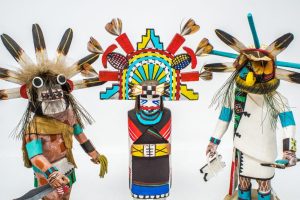
'Watchers' in a different guise. Any 'masks'? Hieroglyph / Archon to enlarge.
Practical example?..."More pertinently, were these human 'serpents' the Watchers of the book of Enoch...Was there memory confused with the envisaged Fall in the terrestrial Paradise, through the 'serpent's' temptation of Adam and Eve? Remember the book of Enoch tells us the Watcher named Gadreel was the serpent that 'led astray Eve'." [From the book 'Gobekli-tepe'].
Question. Literally or 'aspects' of something?
Analogy of same..."For convenience, all of the models discussed above and to be discussed as we proceed can be summed into two meta-models. {1} It is all done by our own nervous systems. As we advance towards 'higher intelligence', our brains can increasingly affect the universe, by quantum inseparability, creating first coincidences, then Jungian synchronicities, then seemingly 'external superhuman beings', who are really masks of the greater selves we are evolving into..." [Extract from the book 'The Cosmic Trigger'].
"...all done by our own 'nervous systems'. " Egyptian equivalent = the spine of Osiris. The Hebrews represent same with the Tree of Life. The author J. Black infers the same {i.e.,''affect''} with the word ''idealism''. Enlarged elsewhere.
Understanding that 'universal framework' makes sense of the above - ALLOWS one to 'get ones head around it'. - in order to define it. As it does with the following...
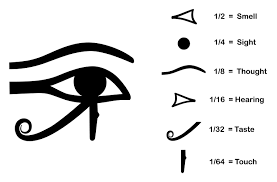
An imaginative one?
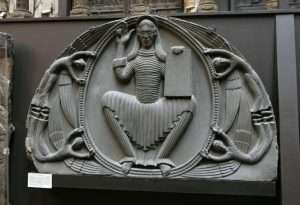
In the pink of health?
An Irish film-maker {Paddy Slattery} talking to BBC 'Outlook' {BBC World-service/27.3.16}. On how he came to terms with his physical condition after being in a car accident and being told he would never walk again: "An amazing thing happened. When your body switches off; at least for me; my imagination switched on. That's when i started to discover other possibilities...boundaries started to withdraw as it were - the canvas became blank again - and i could paint my own picture of what i thought life was all about. My own imagination and my own power of attention could alter my physical reality. Mind over matter was my mantra..."
Sumerian equivalent of something..."Of the celestial bodies...'in the way' of Enlil...twelve were deemed to be 'of' Enlil.......Likewise in the Southern portion of the skies...'the way of' Ea...twelve constellations were listed not merely present 'in' the Southern skies, but as 'of' the god Ea. [Page 190, 'The 12th Planet']. While recalling that Ea was one of Enki's names...'The Lord of saltwater'.
"From it We created you and into it We shall return you, and from it raise you a second time." [Quran 20:55]. Link to ''reincarnation / ''incarnation''. Their true meaning. Not 'its' first impressionable one. Try Part 4.
"Everyone has an internal thought process: that silent other self who speaks to you; the one you debate with." [First sentence; first paragraph; first page of the book by Q. S. Lam].

Finger width?
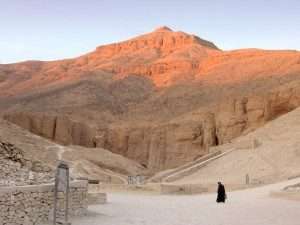
'She who loves silence'.
And/or..."You may care to dwell upon the parable which indicates that 'God' is not to be found in the strong wind nor the earthquake, nor in the fire but only within the silence of the still small voice." [From the book 'The Silent Road'. Mentioned elsewhere. Emphasis, this readers].
Princes Daughter? Nippur to enlarge.
Think about it...'God' in relation to 'divine bit'.
"If only the lamp of divine secrets be kindled in your inner self the rest will come, either all at once or little by little. Some you already know, some we will tell you here. Read, listen, try to understand. The dark skies of unconsciousness will be lit by divine presence and the peace and beauty of the 'full moon,' which will rise from the horizon shedding light upon light......"[Address to the reader, 'The Secret of Secrets'. Mentioned elsewhere].
"He giveth the sun for a light by day, and the ordinances of the moon and stars for a light by night."
Side note: "

Anima or animus?
Continued: "He has lit his lamp and truly the effect is like a sudden shining of a light in a dark place. 'Within you is the light of all the world': So all the ancient seers have always said, and now there words blaze with a vivid light in which all false belief and superstitions die like candles in the sun. Knowledge as to the field and the 'Knower of the field,' that in my opinion is wisdom." [Chapter 13, 'The Yoga of the Bhagavat Gita'. Mentioned elsewhere].
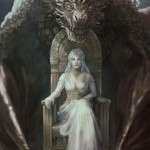
Back of?
That link to the Egyptian equivalent of ''running the fields'' as an enactment within the Sed festival ceremony. Also known as the 'Feast of the Tail.' The tail end of an animal [therefore indicative of a 'lower' state] attached to the back of the Pharaoh's garment. The tail end of something indicative of the beginning of something else. That something else indicative of 'higher'. The real question however is....Why go to all this effort?
Astronomical equivalent?: "Homer uses Ares to restate his almost obsessional concern with the apparent arc of the celestial sphere, and a sequence in Book 5 shows Mars ascending to the dome of the heavens. The sequence begins when Mars rises in the east and Homer says: 'She {Isis} found fierce Ares waiting on the left of the battle. As Mars rises in the skies, Homer says: 'Ares is now lording it in the field', and the planet reaches its highest point at the meridian when 'As a dark cloud in the sky when it comes on to blow after heat, even so did Diomedes see Ares ascend into the broad heavens'." ['Homer's Secret Iliad']. Enlarged elsewhere.
''Running the Fields'' ? {i.e., Egyptian Jubilee enactment}.
''The House of Lords,[a] also known as the House of Peers,[3] is the upper house of the Parliament of the United Kingdom.[4] Membership is by appointment, heredity or official function. Like the House of Commons, it meets in the Palace of Westminster in London, England.''
N.B. The author of 'The Sphinx Mystery' only explains one of those aspects in detail, i.e.,"Horus in the horizon". Question. Purposely or otherwise? [explained elsewhere].

''Heart of oak are our ships, heart of oak are our men.'' Anything offset?
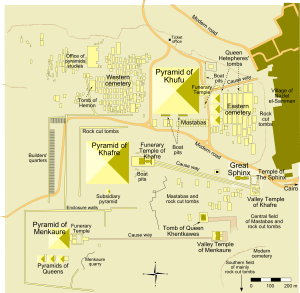
Spiritual three?
Does he 'see' the connection between Anubis and the color green? [chapter six, same book, i.e.,'emerald' tablet link] or the word 'baldachin', both in relation to Abu Ruash, the 'necropolis' most northerly point. Especially when taken into account with its most Southernly one, Memphis [ N.B. 'Apex', of the delta] or 'its'.... 'seat of power', Thinis [Macro], or the 'Altar' stone in relation to the dream stella in 'its' Micro sense, [i.e.,offset purposely].
"...the symbol of the lower will is the Altar." [Quote from within the book by I. Regardie].
Represented on doorjambs left to right and right to left, chapter five. Same book. [i.e., horizontal / vertical links, respectively]. While using that same 'form' [Anubis], which on both doorjambs he is seen to be the 'overriding factor' of all those aspects that are 'beneath' him. From the "tip of his nose to the tip of his tail." ...in order to represent an understanding. All explained within.

Fork in the road?
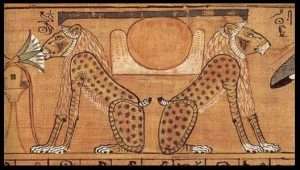
'Flower' = west?
As is the same, with the author of 'Black Genesis' attempting to understand what is meant by 'the land of Yam', i.e., "But where was Yam, and why was it so important to send their most trusted advisors on such 'a dangerous mission'...one from which they may never have returned? The location of the land or kingdom of Yam has long confounded Egyptologists." [Chapter two, page 42].
Together with..."In this letter Pepi refers to Yam as ta-akhet-iu, which Egyptologists translate as 'land of the horizon dwellers.' This implies that Yam was a very distant place, so distant that its people were deemed to live in the horizon." [Page 48, same chapter].

"EYE LEVEL"? An objective eye? Above or below the horizon line?
Understanding this subject in relation to Horus in / of, the horizon, of which the 'Falcon' was his main emblem,[i.e.,'lord' of the sky] answers those questions, i.e.,within the hieroglyph that 'Yam' represents, is one Falcon, but with a potential, of three. Those 'three' that are finally [by way of, an 'understanding'] represented with the 'triple' uraeus. Explained within.

Gemini.
A work in progress: "The importance of the names being used in the Scotichronicon is once again highlighted by the names of Aye-Gaythelos' sons. One of these sons was called Hiber and the other Hymec....derived from Egyptian titles. Hiber from 'river'...Hymec from Egyptian Eema meaning 'sea'....prefixed with an 'h' meaning 'the', as in 'H'ebrew. Eema a link to the word Yam. The word Yam refers to the Mediterranean, and also refers to the west." [Page 81 'Scota: Egyptian Queen of the Scots' / R. Ellis].
Westward leading, —Still proceeding, —Guide us to Thy perfect Light.
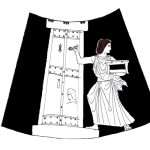
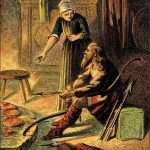
Leavened or UNleavened?
Side note: The Scotichronicon is a 15th-century chronicle by the Scottish historian Walter Bower. It is a continuation of historian-priest John of Fordun's earlier work Chronica Gentis Scotorum beginning with the founding of Ireland and thereby Scotland by Scota with Goídel Glas.
The chronicle consists of 16 books. The book's composition started in 1440. It was completed in 1447. The last event covered in the chronicle is the death of James I of Scotland in 1437. The chronicle depicts Robin Hood as a historical figure. He is depicted as one of the rebels in the Second Barons' War (1264-1267).
'Sixteen'?
Continued: ''Yam'' according to some of these authors means ''sea'' [as an example page 349, 'A Test of Time'] . Think on it, relative to the above. ''Horizon'' in relation to what that word can be associated with. Especially in relation to the ''setting sun''. and /or the ''rising'' one. 'Wet' and 'dry ', or 'in' and 'of '. 'Higher' / 'lower'. What later became defined as the 'divisions' in the modern ''mystery clubs.''

Sixteen steps that led down to the tomb of the 'golden child'.

Troy Town: A centring within a brain or maze?
"In this connection the Prophet said, ' Who [truly] knows himself knows his 'Lord.' Linking together knowledge of 'god' and knowledge of the self. God says,[Quran 40:53] "We will show them our signs on the horizons, [meaning the world outside you] and in yourselfs, [self, here, meaning your inner essence], till it becomes clear to them that he is the Reality.'' This definition of you takes account of your outer and inner aspects." [Extract; including parentheses; taken from chapter 3, 'The Bezels of Wisdom'. Mentioned elsewhere].
Islams equivalent of same. Question. Coincidence?
"Then he said, 'I summoned them by night [inwardly] and by day.|" [outwardly]. Quran 71:5. [Extract, same chapter, same book].
Egyptian equivalent. 'Book of what is in the duat' relative to 'Book of coming forth by day'. Enlarged elsewhere.
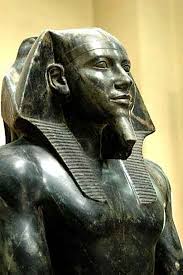
Recall what black is; in the main; symbolic of. Together with ''found upside down in a well within the Sphinx Temple.'' Understanding all that symbolism, especially in relation to the secret cavern of Sokar, gives clues as to Mr Khafres status. ''Flint / Obsidian'' link?
Sokar, a falcon 'deity'... which in this instance, will always be represented on a 'dark' background. Representing a potential still in its 'unknown' phase. Represented as the 'unconscious', i.e.,at the 'back of the head'.
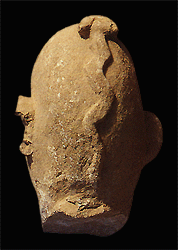
Gobekli-tepe: From a different perspective.
Or in the case of landscape symbolism, as 'wasteland', [or equivalent]. Symbolic/indicative of same, i.e., notice how 'its' symbolism blends in, with the individual. 'See' it?
Another example representing the same 'meaning', with the same 'intention'..."In the fourth hour of the Duat, the Am - Duat text refers to the 'road of the secret things of Re - stau [Rostau]...by which entereth the body of Sokar who is on his sand, the image which is hidden, and is neither seen nor perceived." [page 152 'The Cygnus Mystery' by A. Collins].
Think about it, especially in relation to the 'Pharaohs mound' [Buto]... together with what the Nile Delta represents, [where the ''children of Israel'' began their own 'journey'. See 'A Test of Time' for verification]. Proving the viability of good research, but research that has not taken into account this subject.
Hence the reason why many are ''off the mark'' with their final conclusions. That relationship to 'Anubis' and 'its' relationship to the Sphinx. Then 'its' relationship to the above, i.e., valley/quarry in relation to 'Plateau', i.e.,'horizontal' / 'vertical' symbolism, relative to 'Horus'. Finally that link to what Horus represents.
Roman equivalent the Baetyl stone, i.e.,".....a Phoenician word that was later written as Beth-el....and was apparently the word root for Bethlehem, the birthplace of Jesus, who became the chief corner 'stone' of the Christian world. The baetyl stone was directly associated with oracles and prophesy". Think about it, relative to 'North' [symbolism of]. [Chapter three. 'The Source Field Investigations']. Greek equivalent = Delphi.
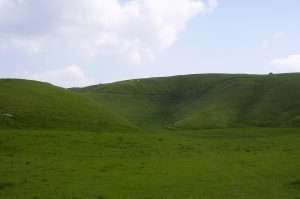
Uffington White Horse with the 'Manger' below. Dragons Hill to the left. Giants stairway to the right.
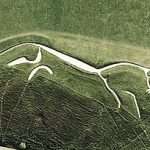
Facing west.
REFRESHER: The crystal stone star as defined by K. Nichols that 'led' the three wise men to the 'childs' manger. That 'divine' one {'bit'?}. Eight spiked. Forteen generations mentioned. Manger = N/E aspect. Sixteen steps lead down into that place of 'birth'. Just as there was 16 steps that led to the 'tomb' of the ''golden child''. [4th Sunday of Advent / Magdala / Israel / 2021].
Refresher: ''According to Samsung's founder, the meaning of the Korean hanja word Samsung (三星) is "three stars". The word "three" represents something "big, numerous and powerful",[13] while "stars" means "everlasting" or "eternal", like stars in the sky.''[14][15]

Neolithic equivalent of that ''unknown'' yet to be realized aspect, that is now a ''known'' one. i.e., rising from the back of the head, on limestone. Recall what its two main features, snake and ears, are symbolic of. What they represent. Found s/e Turkey. Close to Gobekli-tepe.
That link to the 'Stone of Scone' and/or the 'Stone of Jacob'. Check Wikipedia. That final link to the 'Golden child' of Akhenaten fame. One represents a potential to learn something from an 'unconscious start point',[''shadow''] the other an actual representation of the now 'conscious' aspect of same.[''anima/s'']. Can you 'tell' the difference?
Further clue. Bottom up......Top down. [or ''Youngest'' / ''Eldest''].
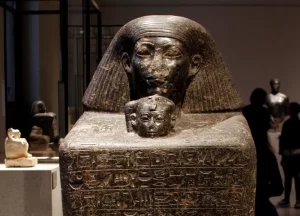
From a different perspective: In front or back of?
That 'child' that was found buried at the base of the 'Valley of the kings'. Symbolic of a further 'development', a 'beginning' of something. That same 'child' whose mummy was found to be 'charred'. [National Geographic. ' Ultimate Tutankhamun'. December 2013].
Same as the charred bones found at Stonehenge {Aubrey hole number 7} or the female {Mayan} skeleton at Copan {enlarged elsewhere}...
Representing a 'rebirth'. Greek equivalent = the 'Phoenix',...out of those ashes...a new 'development'. Hence the reason why that 'representation' had to be at the base. More importantly, in the middle of it. Symbolic of the beginning of a new 'phase'.

Heart of the dragon. Enthroned.
A new understanding. That 'understanding' that is represented by the above as well as the omission of the heart. No heart was found. The only 'mummy' on record, not to have the heart present in some form. Indicative of 'its' symbolic intention only.
Will that heart be found in the tomb of Akhenaten?
"When he contracted the illness from which he died his son Abdul - Aziz saw that he was suffering great pain, tossing and turning in bed. 'Do not worry about me,' he said to his son. 'I am being turned over again and again in the knowledge of Allah.' When his son Abdul - Jabbar asked him, where it hurt him he said, 'All of me aches except for my heart. There is no pain in it, for it is with Allah.'' [Introduction, 'The Secret of Secrets' by Al - Jilani].
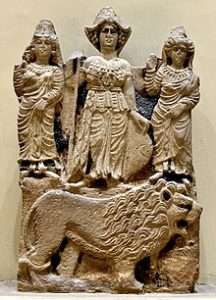
'Enthroned' in a different SENSE: Al-Lat was also called as a daughter of Allah along with the other two chief goddesses al-'Uzza and Manat. According to the Book of Idols, the Quraysh were to chant the following verses as they circumambulated the Kaaba: By al-Lat and al-'Uzza, And Manat, the third idol besides.
 Side note: "Tutanknamen lay in a golden coffin, surrounded by an extraordinary array of grave goods: everything from religious symbols and near size life statues to loincloths. The only thing missing was a library. The tomb was remarkably devoid of written information, and this led several Egyptologists to announce that its contents had little value beyond showcasing the artistic and technological achievements of the New Kingdom Egyptians. They could not have been more wrong. Today it is recognised that the individual artifacts stored in the tomb have their own tales to tell, and modern science is allowing the experts to reconstruct these stories using grave goods, the tomb itself, and the kings mummified body." [ 'Tutankhamen's Curse: The Developing History of an Egyptian King' / J. Tyldesley]. Among others try ''loincloth''.
Side note: "Tutanknamen lay in a golden coffin, surrounded by an extraordinary array of grave goods: everything from religious symbols and near size life statues to loincloths. The only thing missing was a library. The tomb was remarkably devoid of written information, and this led several Egyptologists to announce that its contents had little value beyond showcasing the artistic and technological achievements of the New Kingdom Egyptians. They could not have been more wrong. Today it is recognised that the individual artifacts stored in the tomb have their own tales to tell, and modern science is allowing the experts to reconstruct these stories using grave goods, the tomb itself, and the kings mummified body." [ 'Tutankhamen's Curse: The Developing History of an Egyptian King' / J. Tyldesley]. Among others try ''loincloth''.

''You cannot be serious!''
As is the symbolic intent of ''goose meat'' found in the same tomb alongside other meat produce, i.e., that of the Ox [bull link]. Only one box of goose meat. The authors opinion is that the difference is indicative of the reversal of the earths magnetic fields relative to the sun spot cycles and its effect on fertility etc. All of which are encoded within the total number of those same egg like 'boxes'. Understand the symbolic meaning of ' food ' [''for thought''] relative to the symbolism of ' goose ' and ' bull/ox ' and what they represent within this subject, gives a truer meaning. All found within. [Pages 103/4, 'The Tutankhamun Prophecies].
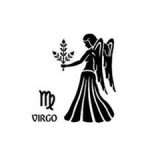
Wheat or barley? 'M' OR 'W'?
Side note: "There are two possible etymologies of the name al-Lat.[5] Medieval Arab lexicographers derived the name from the verb latta (to mix or knead barley-meal). It has also been associated with the "idol of jealousy" erected in the temple of Jerusalem according to the Book of Ezekiel, which was offered an oblation of barley-meal by the husband who suspected his wife of infidelity. It can be inferred from al-Kalbi's Book of Idols that a similar ritual was practiced in the vicinity of the image of al-Lat.[5] The second proposed etymology takes al-Lat to be the feminine form of Allah.[5] She may have been known originally as ʾal-ʾilat, based on Herodotus' attestation of the goddess as Alilat.[6]
Al-Lat was used as a title for the goddess Asherah or Athirat.[7] The word is akin to Elat, which was the name of the wife of the Semitic deity El.[8] A western Semitic goddess modeled on the Mesopotamian goddess Ereshkigal was known as Allatum, and she was recognized in Carthage as Allatu.[9]"

Question. Where will the heart be found? WHERE SHOULD it be found? Any wine jars?

Kuelap.
A working example: A 'new city' found close to the Valley of the Kings. Zahi Hawass finds it while looking for the temple of Tutankhamun. An empty space {'coal sack'?}, that should have had a temple within it. Completely enclosed in serpentine boundary walls. 'Meat' purposely left behind in large vats {'jars'}. As was a large bundle of leather used for sandals. In excess of 'eighty' found in the tomb of Tut. It all leads to Amenhotep III - a relation of same. A mud brick with the name of the city - The Dazzling Aten.
Side note: Pandora's box can also be a 'jar'.
And/or: Amenhotep III tomb found in the western branch of the Valley of Kings. Called the Valley of Monkeys.
'Foremost of the Westerners'?

Folded/UNfolded?
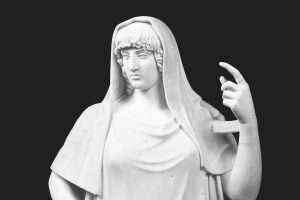
Hestia: Guardian of the hearth. N/W?
Continued: ''Hestia was the virgin goddess of the hearth and the home. As the goddess of the family hearth she also presided over the cooking of bread and the preparation of the family meal. Hestia was also the goddess of the sacrificial flame and received a share of every sacrifice to the gods. The cooking of the communal feast of sacrificial meat was a part of her domain.''
A work in progress: ''The truth is, dry white Somlo wine - is good with everything - wild meats especially, but anything savoury....There's an ancient folk belief that drinking Somlo juhfark on one's wedding night {as the Habsburg emperors did} would lead to the birth of male children.'' [Readers Digest: 'The Lost Wines of Hungary' / April 2017].

'Carapace' shell. 'Triple' aspect. Inner/Outer. Amenhotep III to enlarge.
REFRESHER: "As the Prophet says, 'There is a piece of meat in mans body - when it is in a good state, the whole being improves, and when it is in a bad state, the whole being falls apart. Be aware, that piece of meat is the heart." [Extract taken from chapter 14, 'The Secret of Secrets'].
A working example: ''The 'Yellow Submarine' was a famous Beatles song - unfortunately the poster has a few tears right in the meat of the iconic picture - but the rest of it is okay. I could still sell it.'' [Chumlee: 'Pawn Stars' S19 EP8].
And/or: ''The current name for Bethlehem in local languages is ![]() Bayt Laḥm in Arabic (Arabic: بيت لحم), literally meaning "house of meat," and Bet Leḥem in Hebrew (Hebrew: בֵּית לֶחֶם), literally "house of bread" or "house of food."[12] The city was called in Ancient Greek: Βηθλεέμ Greek pronunciation: [bɛːtʰle.ém] and in Latin: Bethleem.[13]
Bayt Laḥm in Arabic (Arabic: بيت لحم), literally meaning "house of meat," and Bet Leḥem in Hebrew (Hebrew: בֵּית לֶחֶם), literally "house of bread" or "house of food."[12] The city was called in Ancient Greek: Βηθλεέμ Greek pronunciation: [bɛːtʰle.ém] and in Latin: Bethleem.[13]
"Westward leading still proceeding guide us to the light."
East or west?
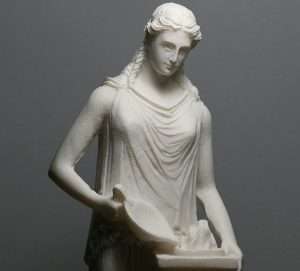
Hestia. 'Gravy' train? 'Station' of no station?
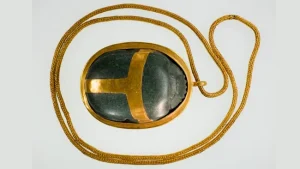
A scarab beetle set in gold shows that ancient Egyptians thought the heart was the most important organ in the human body. This amulet, shaped like a scarab beetle, was discovered in the tomb of an ancient Egyptian noblewoman named Hatnefer. But the charm, which was intended to assist her journey to the afterlife, was not originally made for her.
The scarab was carved from serpentinite, a greenish-gray metamorphic rock, and measures roughly 2.6 inches (6.6 centimeters) long. It was set in gold and suspended on a 30.5-inch-long (77.5 cm) plaited gold chain. This exquisite necklace was excavated in the 1930s from the tomb of Hatnefer and her husband Ramose and is on display at The Metropolitan Museum of Art in New York City.
Hatnefer's mummy and tomb contents suggest she was powerful in her own domain. She was about 60 years old when she died, and she was buried with bronze and silver mirrors, cosmetics and wood chests full of high-quality linen. 'Swaddling'?
The earliest mention of Bethlehem as a place appears in the Amarna correspondence (c. 1400 BCE), in which it is referred to as Bit-Laḫmi,[14] a name for which the origins remain unknown. One longstanding suggestion in scholarship is that it derives from the Mesopotamian or Canaanite fertility god Laḫmu and his consort sister Lahamu,[15] lahmo being the Chaldean word for "fertility".[13][16] Biblical scholar William F. Albright believed that this hypothesis, first put forth by Otto Schroeder, was "certainly accurate".[a] Albright noted that the pronunciation of the name had remained essentially the same for 3,500 years, even if the perceived meaning had shifted over time: "'Temple of the God Lakhmu' in Canaanite, 'House of Bread' in Hebrew and Aramaic, 'House of Meat' in Arabic."[17] While Schroeder's theory is not widely accepted,[12] it continues to find favour in academic literature over the later literal translations.[18] Another suggestion is an association with the root l-h-m "to fight", but this is thought unlikely.''
Refresher: ''The Christmas Star is also known as the Star of Bethlehem.'' ['The Chase'].
''The star of your being is rising.''
''Bethlehem (/ˈbɛθlɪhɛm/; Arabic: بيت لحم ![]() Bayt Laḥm; Hebrew: בֵּית לֶחֶם Bēṯ Leḥem) is a city in the West Bank, Palestine, located about 10 kilometres (6.2 mi) south of Jerusalem. It is the capital of the Bethlehem Governorate, and has a population of approximately 25,000 people.[3][4] The city's economy is largely tourist-driven; international tourism peaks around and during Christmas, when Christians embark on a pilgrimage to the Church of the Nativity, revered as the location of the Nativity of Jesus.[5][6] At the northern entrance of the city is Rachel's Tomb, the burial place of biblical matriarch Rachel. Movement around the city is limited due to the Israeli West Bank barrier.''
Bayt Laḥm; Hebrew: בֵּית לֶחֶם Bēṯ Leḥem) is a city in the West Bank, Palestine, located about 10 kilometres (6.2 mi) south of Jerusalem. It is the capital of the Bethlehem Governorate, and has a population of approximately 25,000 people.[3][4] The city's economy is largely tourist-driven; international tourism peaks around and during Christmas, when Christians embark on a pilgrimage to the Church of the Nativity, revered as the location of the Nativity of Jesus.[5][6] At the northern entrance of the city is Rachel's Tomb, the burial place of biblical matriarch Rachel. Movement around the city is limited due to the Israeli West Bank barrier.''

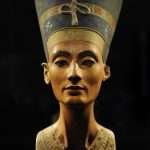
Real or symbolic? Heart of the matter?
And/or: "Corresponding to Horus, Master of the North, is the dilation of the heart, the spiritual quest for transcendent light symbolised by the search for the 'Eye'. It is therefore in the North that the mummy, the receptacle of the 'divine' spark during existence, now freed from decomposition, was respectively buried {sarcophagus in Gt. Pyramid?}. Corresponding to Seth, Lord of the South, are the contractive functions assimilated to those of semen {the testicles are his symbol}: those of physical, terrestrial continuity. Thus in the South the 'Ka' can exercise to the maximum its capacity of 'calling' and manifest its appetite, the reason that it was symbolically offered food items. The South then was the burial place for the vital organs, the animal parts of man." [Extract from the book by L. Lamy].
Biblical equivalent = The 'feeding' of the five thousand [New Testament]. As explained within the book 'Lazarus Come Forth'. Mentioned elsewhere.
"And he it is that feedeth but is not fed." [Quran 6:14].
A 'tasting' of something?
Analogy with the same intent..."I visited him on two occasions at an interval of one year. The second time he spoke differently, and gave me different advice from the first time. I hope that this means that i had assimilated what he told me on my first visit and was ready for stronger meat." [From the book 'Long Pilgrimage: The Life and Teaching of Shivapuri Baba by J. Bennett].
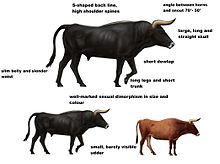 "These men have never sought popular approval, or numbers of followers. They are indifferent to these things, for they know how few they are in each generation who are ready for the truth, or who would recognize it, if it were presented to them. They reserve the strong meat for men, while others furnish the milk for babes. They reserve their pearls of wisdom for the few elect, who recognize their value......." [Extract from the 'introduction' to the book 'The Kybalion' by the Yogi Publications Society, Masonic Temple, Chicago, Illinois].
"These men have never sought popular approval, or numbers of followers. They are indifferent to these things, for they know how few they are in each generation who are ready for the truth, or who would recognize it, if it were presented to them. They reserve the strong meat for men, while others furnish the milk for babes. They reserve their pearls of wisdom for the few elect, who recognize their value......." [Extract from the 'introduction' to the book 'The Kybalion' by the Yogi Publications Society, Masonic Temple, Chicago, Illinois].

''H'' form? and/or Hawthorns?
"Thus even at Philae in later times...in the temple of Osiris, there were 360 bowls for sacrifice, which were filled daily with milk by a specified rotation of priests." [Taken from chapter seven 'The Arctic Home in the Vedas' by B. G. Tilak].
And/or: ''A hymn to Atum-Ra: I am the great Neter who has made himself, who creates his names, the master of the divine Ennead. What means this? It is Ra creating the names of his limbs, meaning the neters that are in his following came into existence''. [Page 162 'Sacred Science' / R. A. Schwaller de Lubicz].
'Followers of Horus'?
To understand that 'wider' view within the 'whole' put ''pearls'' in the search box.....together with.....
A working example {and/or work in progress}: ''My soul has thirsted for the living god; when shall i come and appear before the face of god?'....Mary Magdalene comes face to face with Jesus. It is above all a transforming encounter....She stands in a garden, reminiscent of the Garden of Eden, yet she is here at the foot of Mount Arbel, in her home town of Magdala.'' [Pages 91/136 'Mary Magdalene: Insights from Ancient Magdala' / J. Ristine].
Spirit and soul. Which and why?

'Duality'?
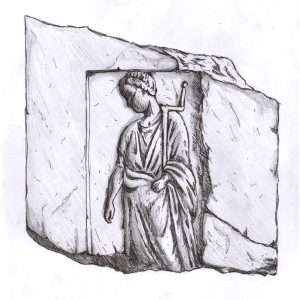
''The madness of Orestes was cured by a 'stone' in Laconia.'' [Page 97 'Alchemical Studies' / C. G. Jung].
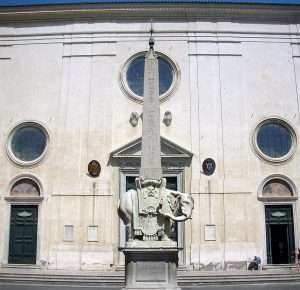
Strongest heart?
"Akbar inaccurately but lovingly attributed to Christ the following saying {inscribed on the Victory Arch in Akbar's new city of Fatehpur Sikri}: 'The world is a bridge; pass over it, but build no house upon it.' " [Extract taken from the book 'Autobiography of a Yogi' ].

“Most certainly, I tell you, one who doesn’t enter by the door into the sheep fold, but climbs up some other way, is a thief and a robber." Sheep meat?
"As the Prophet says, 'There is a piece of meat in mans body - when it is in a good state, the whole being improves, and when it is in a bad state, the whole being falls apart. Be aware, that piece of meat is the heart." [Extract taken from chapter 14, 'The Secret of Secrets'].
"Out of the eater came forth meat, out of the strong came forth sweetness." [ Judges 14:14] In relation to Samson's riddle. Explained elsewhere.
".......the true symbolic significance of the tomb and its treasures was intentionally hidden from them; the message was spiritual, too good for grave robbers, be they villains or government led archaeologists. Tutankhamun's tomb, like Lord Pacals, would have to wait until the science of the day could explain its mysteries. The tomb was never robbed. The chaos in the tomb was all part of the riddle." [Chapter three. 'Tutankhamun's Prophecies'].

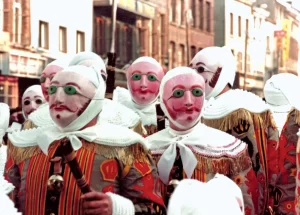
Shrove Tuesday - Belgium. 'Orange' to enlarge.
Excellent research, but once again because of the authors lack of understanding relative to this subject, his final hypothesis is off the mark. Even more so because of his misuse and 'manipulation' of the 'data' i.e., "Tut wears the crown of Osiris, king of the dead, adorned with six uraei carrying solar discs. Five more solar discs, three at the base, and two at the top of the crown, are framed by two vertical feathers. Examination of this area, shows that another solar disc should have been included alongside the two that are in position. The addition of this missing disc would have brought the disc count on the crown to twelve, again astronomically significant, [in relation to his sun spot cycle hypothesis] . That this is so, is confirmed by the row of twelve tiny serpent discs touching tuts head beneath the crown. Although space exists for this 'missing' circular orange disc no indentation is visible in the gold foil, meaning that the disc was omitted from the composition intentionally. But this need not concern us unduly; along the top of the picture there is a plentiful supply of orange solar discs"........."These two defects in the picture [lack of astronomical significance in the top rows of discs, and the missing disc in tuts crown] can be overcome at a single stroke, we can borrow one orange disc from the top row and use it to repair the missing orange disc in the crown on tuts head. If we recall, repairing the missing corners of the Lid of Palenque enabled the code that was contained in the borders to be broken." [Page 116/17, same book].
... In the immortal words of Mr John P. McEnroe...''You cannot be serious!''
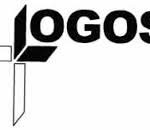 Understanding eleven {i.e., 'five' + 'six'} relative to twelve [as well as the adjacent symbols/keys] gives meaning to the composition that this author is attempting to understand, and more importantly... without manipulating the data. As for the 'Lid'... the said 'corners' are part of the design. A link to 'angle' symbolism, and to ''take the lid off something''. Explained within. 'Seeing' it? If not, attempt to solve it later using only the available data. Sooner or later you will...as proven in any subject, depending on interest.
Understanding eleven {i.e., 'five' + 'six'} relative to twelve [as well as the adjacent symbols/keys] gives meaning to the composition that this author is attempting to understand, and more importantly... without manipulating the data. As for the 'Lid'... the said 'corners' are part of the design. A link to 'angle' symbolism, and to ''take the lid off something''. Explained within. 'Seeing' it? If not, attempt to solve it later using only the available data. Sooner or later you will...as proven in any subject, depending on interest.
'Head of the corner' ?
'Fiftysix' to enlarge.
As for those colours try Yellow in relation to Orange.
'Come into my mind' / Robin Williams.

Chick-pea?
Something closer to the 'mark': "Walking towards the right at the bottom of picture {lowest level} are seven people with animal heads. They're called neters, and each of them has an orange, red oval above its head - called the egg of metamorphosis - a certain stage of resurrection - a biological change. They hold an image of that transition as they walk along that line {'line of sight'?} then suddenly there's a 90 degree shift upward - and now walking perpendicular to their first direction. [Pages 43 and 128 'The Ancient Secret of the Flower of Life' / Vol 1].
''First, let us say that , according to the sacred language, the term philosophers stone, means the stone which bears the sign of the sun. The solar sign is characterized by its red coloration which can vary in its intensity....'' [Page 134 'The Dwellings of the Philosophers' / Fulcanelli].
'Cinnabar'?
Something 'set in stone' in the spiritual sense of the word, not material.
Intelligence of the heart?
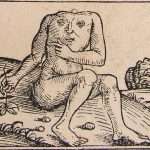
Blemmyes to enlarge.
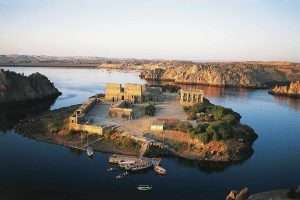
Philae.
A working example: ''My friend Tere once told me that ISIS appeared in sandels at the BACK door of her 'house' one day, bearing an odour of cinnabar and the secret of life. 'Tere, Tere,' the goddess said softly, 'This is it. When you cook the lasagna, you dont have to BOIL the noodles first.'' [Page 301 'Dreams of Isis: A Womans Spiritual Sojourn' / N. Ellis].
''Feast of Maturity'' to enlarge.
Side note: In preparation for sliding on grass courts, Novak Djokovic practices same, in the gym, in slippers. [Wimbledon commentary/ July 2022].
'Golden' ones?
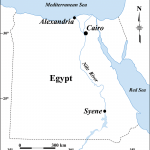
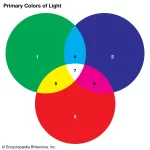
Whats the primary colour for M/F? 'Copper' to enlarge.
Continued: "I soon came to realize that there was a considerable difference between my understanding , based on what i had been taught at school and through religious indoctrination, and what had apparently happened based on historical records. In particular, it is what has been left out, deliberately or otherwise, that distorts the imaginary. It is what we are not told that colours our perceptions. When one is aware of the intervening facts, a new angle on events is presented." [Page 31, chapter one, 'The Secrets of Solomon's Temple' by Kevin Gest].
'Negation' ?
That link to right angle triangle symbolism [90 degrees etc]. That lead to horizontal / vertical symbolism, i.e., crossover point - Seeing it yet?
The real question however is Why? Why go to all this effort. To verify a subject generation to generation?
"The equinoxes are the only times when the solar terminator {the ''edge'' between night and day} - is perpendicular to the equator. As a result, the northern and southern hemisphere's are equally illuminated." [Wiki/'equinox'].

''Speech is silver. Silence is golden''? {Patience?}. Question. What was found at the 'base' {foundation?} of the above?
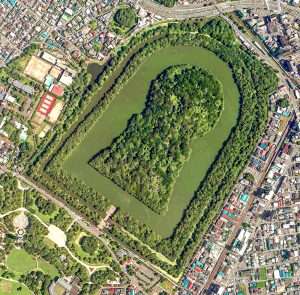
'Three and four'.
"The greatest hunger in life is not for food, money, success, status, security, sex, or even love from the opposite sex. Time and again people have achieved all of these things and wound up still feeling dissatisfied - indeed, often more dissatisfied than when they began. The deepest hunger in life, is a secret that is revealed only when a person is willing to unlock a hidden part of the self. In the ancient traditions of wisdom, this quest has been likened to diving for the most precious pearl in existence, a poetic way of saying that you have to swim far out beyond shallow waters, plunge deep into yourself, and search patiently, until the pearl beyond price is found. This pearl is also called essence, the breath of God, the water of life, holy nectar - labels for what we, in our more prosaic scientific age, would call transformation." [First page, first paragraph from the book, 'The Book of Secrets' by Deepak Chopra]. Try pearl.
''Patience is the mother of will. If you have no mother, how can you be born." Gurdjieff.
'The Garden in Ancient Egypt' by A. Wilkinson.
Side note: ''The Imperial State Crown contains four pearls that are said to have been used as earrings by Elizabeth I.'' ['The Chase' / 2018].
"Kofun (古墳, from Sino-Japanese "ancient grave") are megalithic tombs or tumuli in Northeast Asia. Kofun were mainly constructed in the Japanese archipelago between the middle of the 3rd century to the early 7th century CE.[1]
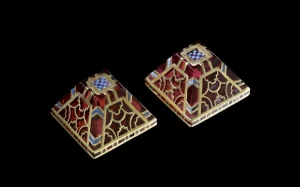
Anglo Saxon sword harness. i.e., to keep it safe. WITHIN the scabbard - in the 'peaceful' position {'blue'}. Silent mode. But at the ready when needed - IF needed.
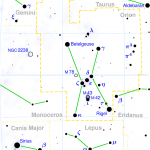
Fire AND water.
The term is the origin of the name of the Kofun period, which indicates the middle 3rd century to early–middle 6th century. Many kofun have distinctive keyhole-shaped mounds (zempō-kōen fun (前方後円墳)). The Mozu-Furuichi kofungun or tumulus clusters were inscribed on the UNESCO World Heritage List in 2019, while Ishibutai Kofun is one of a number in Asuka-Fujiwara residing on the Tentative List...The kofun tumuli have assumed various shapes throughout history. The most common type of kofun is known as a zenpō-kōen-fun (前方後円墳), which is shaped like a keyhole, having one square end and one circular end, when viewed from above. There are also circular-type (empun (円墳)), "two conjoined rectangles" typed (zenpō-kōhō-fun (前方後方墳)), and square-type (hōfun (方墳)) kofun. Orientation of kofun is not specified. For example, in the Saki kofun group, all of the circular parts are facing north, but there is no such formation in the Yanagimoto kofun group. Haniwa, terracotta figures, were arrayed above and in the surroundings to delimit and protect the sacred areas."
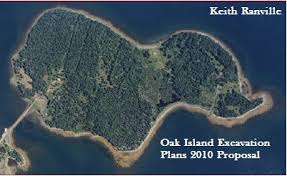
Divided into 'thirtytwo'.
Refresher: ''The Imperial State Crown contains four pearls that are said to have been used as earrings by Elizabeth I.'' ['The Chase' / 2018].
"...So who or what did the twin pillars represent? Archaeologists at the time suggested they symbolized a ''personal divinity.'' This might have been so, but it did not explain why there were two monoliths side by side OR why they faced out toward the cult building's S/W placed entrance - the building { at Nevali Cori} was found to be orientated almost exactly N/E - S/W." [From the book 'Gobekli Tepe' by A. Collins].
N.B. Gobekli-tepe main monuments orientate N/W from S/E. Question. Put the 'two' together - what form do you see?
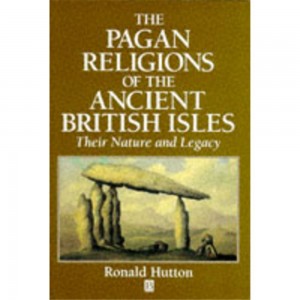
'Uphill' ?

'Little reed horse'. Straddled?
A work still in progress: "By a process of deduction, therefore, we are left with only one possible alignment that might work in 9600BC and this is to the summer solstice sunset, north of west, which presents no conflict to the general south-east to north-west alignment of Gobekli-tepe. Moreover, computer simulations show that on the summer solstice in the epoch of 9600BC the sun was in the constellation of Scorpio and while it did not align with the center of the galaxy {having moved pass the dark rift and the nuclear bulge}, it was still reasonably close to that target. As the reader will recall, Sagittarius and Scorpio straddle the dark rift and the nuclear bulge but it is in Sagittarius, not Scorpio, that the exact alignment with the center of the galaxy occurs. Nonetheless, it seems reasonable to accept the summer solstice sunset, north of west, in the epoch of 9600BC as a candidate for the scene depicted on pillar 43. A relatively minor error of draughtsmanship by the sculptor who carved the figures would, in theory, be enough to explain the discrepancy...This alignment, though accurate enough i.e.,the setting of the star Deneb {in the constellation of Cygnus? or Leo?}, could never have been observed from enclosure 'D', for the

'Downhill' ?
simple reason that enclosure D is built into the side of a steep ridge of the Tepe that rises to the north of the main group of enclosures. No observation of the setting of Deneb would have been possible from enclosure 'D' AND for the same reason no observation of the summer solstice sunset would have been possible. The sun would have dropped out of sight behind the ridge for approx., 20 minutes before the sun set...It would have been necessary to leave enclosure D and climb the ridge. For this reason, therefore, combined with the fact that the sun in Scorpio, while close, does not target the center of the galaxy a summer solstice sunset alignment must also be ruled out....This leaves us only with the winter solstice with the sun in Sagittarius targeting the center of the Millky Way galaxy..." ['The Magicians of the Gods'].
'Ridge of the mind' in relation to: "Error runs down an inclined plane, while truth has to laboriously climb its way up hill". Enlarged throughout. All as a means...?
Fomalhaut?
CARAL?
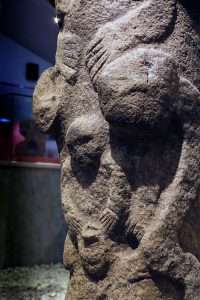
Something 'born' from that 'effort'? A 'basket' being held? Try ''child'' as well as ''basket'' to get closer to a mind set.
A {working?} example {i.e.,something hinted at}: "And from what you read you know there's a possibility that Imhotep's tomb could be somewhere around that ridge where your aunt built her pavilion...The ridge was about a hundred meters long, a mere ten wide at one end but broadening to fifty at the other {i.e.,'triangular' in shape in the 'horizontal' sense of the word?}. Roughly in the center stood the low stone construction, with windows and roof of mushrabeya crumbling under pink and dark red bougainvillea...Barely a kilometre away to the west was the desert and the Step Pyramid of Saqqara, while to the east, beyond the waters of the Nile which one could only guess between the palms and high vegetation screening the factories of Helouan, were the Mokhattam hills. To the south and north, centuries old palm trees, orchards, and fields of clover and wheat stretched into the distance. I walked into the pavilion...Later, Victor took me for a walk along a ridge above the vineyards, and talked about the Eternal Steps...Simply that it was founded by Imhotep's son in his honour, and is a fraternity of men and women united by a philosophy of life, stemming from Hermetic tradition dating back to pre-dynastic times...We walked in silence for a few moments while he led the way through a thicket of gaunt chestnut trees over a low, dry stone wall...He stopped and pointed through the trees to the distant Cathedral of Siena...You know, the influence of Hermes reached even into it's hallowed precincts. There's is a unique mosaic in the floor, just as you go in, which depicts him with a Renaissance man on one side and an Oriental on the other, certainly the only one of its kind in a European Cathedral...It was your aunt who first told me about it. She was also responsible, in a way, for my buying the monastery {i.e.,below the ridge}..." [Pages 26,45,103, 'Inquest on Imhotep: Beyond the White Walls' / D. Flower].
Imhotep used in story form for the reader to 'see' a connection between monastery / ridge and Cathedral and/or Step Pyramid. Others highlighted.

Pavilion.
Understanding the above gives further clues about ''Enclosure D'' and why it may have been within 'its' original design to 'see' something beyond the ridge. In that ''inner'' sense of the word.

Front or back of? White Chapel?
And/or: ''In you name of {Unas} - He-In-The-Divine-Pavilion. He -In-Fumigation. He-In-The-Coffer. He-In-The-Shrine. He-In-The-Sack. He lives! He is not dead. He has not gone down. He has not been judged. He judges......The PAVILION of Unas is Woven with Reeds. The Plenty of Unas is in the Field of Offerings. The water of Unas is 'Wine'....His Nurse is the Milk goddess. It is She who makes him live again....'' [Pages 23/34 'The Pyramid Texts' / W. Budge].
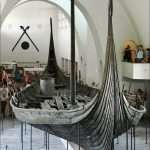
'Thirtytwo' ships.
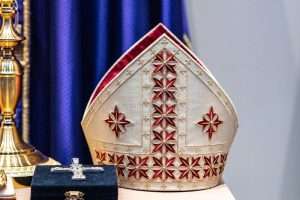
Split? Djedefre to enlarge.
N.B. The Bayeux Tapestry - the end of one era and the beginning of another. Weaved with wool. Kept in a coffer in the heart of the cathedrals treasury: "The earliest record of the tapestry is in a 1476 inventory of the cathedral: it states that a U-shaped canvas was displayed in the nave to the congregation and was about seventy meters long. It was displayed during the Feast of the Relics - the 1st to the eighth of July. The rest of the time it was kept safe in the cathedral treasury." ['Mysteries of the Bayeux Tapestry' / BBC4].
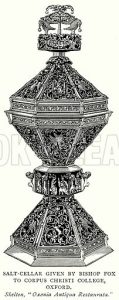
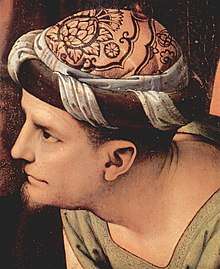 "The cloth consists of fiftyeight scenes,[note 1] many with Latin tituli, embroidered on linen with coloured woollen yarns. It is likely that it was commissioned by Bishop Odo of Bayeux, William's maternal half-brother, and made for him in England in the 1070s. In 1729, the hanging was rediscovered by scholars at a time when it was being displayed annually in Bayeux Cathedral. The tapestry is now exhibited at the Musée de la Tapisserie de Bayeux in Bayeux, Normandy, France (49.2744°N 0.7003°W).
"The cloth consists of fiftyeight scenes,[note 1] many with Latin tituli, embroidered on linen with coloured woollen yarns. It is likely that it was commissioned by Bishop Odo of Bayeux, William's maternal half-brother, and made for him in England in the 1070s. In 1729, the hanging was rediscovered by scholars at a time when it was being displayed annually in Bayeux Cathedral. The tapestry is now exhibited at the Musée de la Tapisserie de Bayeux in Bayeux, Normandy, France (49.2744°N 0.7003°W).
The designs on the Bayeux Tapestry are embroidered rather than in a tapestry weave, so it does not meet narrower definitions of a tapestry.[5] Nevertheless, it has always been referred to as a tapestry until recent years when the name "Bayeux Embroidery" has gained ground among certain art historians. It can be seen as a rare example of secular Romanesque art."
A practical example: ''The Great Mosque of Cordoba - Atop the central arch was a pavilion where the Caliph could observe events in the plaza below.'' [Page 53 'Archaeology' / March-April 2023].
Side note: ''The building at a cricket ground that is used for changing and having refreshments is called a pavilion.'' ['The Chase' / ITV / S15 EP17].
''The indigenous Nepal Bhasa term for Kathmandu is Yen. The Nepali name Kathmandu comes from Kasthamandap, which stood in Durbar Square, was completely destroyed by the earthquake of April 2015, but has since been reconstructed. In Sanskrit, Kāṣṭha (Sanskrit: काष्ठ) means "wood" and Maṇḍapa (Sanskrit: मण्डप) means "pavilion". This public pavilion, also known as Maru Satta in Newari, was rebuilt in 1596 by Biseth in the period of King Laxmi Narsingh Malla. The three-storey structure was made entirely of wood and used no iron nails nor supports. According to legends, all the timber used to build the pagoda was obtained from a single tree.[5] The structure collapsed during a major earthquake in April 2015.''

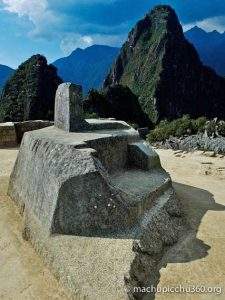
Above the clouds?
Side note: ''In my distress i called upon the Lord....he heard my voice out of his temple....came into his ears...The earth shook and trembled {'volcano'?}...the foundations and hills moved: There went up a smoke out of his nostrils {winged dragon?}, and fire out of his mouth: coals were kindled by it. He bowed the heavens also, and came down: and darkness was under his feet {'eclipse'?}. And he rode upon a cherub...upon the wings of the wind. He made darkness his secret place; his pavilion round about him were dark waters and thick clouds of the skies.' At the brightness that was before him his thick clouds passed, hail stones and coals of fire....Then the channels of waters were seen {'canals'?}, and the foundations of the world were uncovered....at the blast of the breath of his nostrils...He brought me forth also into a large place, he delivered me because he delighted IN me.'' [Psalm 'eighteen' 3-15 + 2 Samuel 22: 7 -17].
Refresher: ''The largest public SQUARE in Europe is part of the British museum.''
Isaiah 19:19.
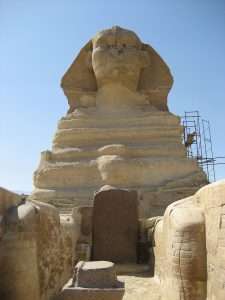
Shield?

One horn or two?
And/or: ''The Lord is my light...Though a HOST should encamp against me {'Troy'?}, my heart shall not fear: though war should rise against me {Mahabharata War?}, in this will i be confident....That WILL i seek; after that i may dwell in the house of the Lord to behold the 'beauty' of the Lord and to inquire in his temple. For in the time of trouble he shall hide me in his pavilion in the secret of his tabernacle shall he hide me; he shall set me up upon a rock {'pedestal'?}.....

"Stretched?"
And now shall my head be lifted up above mine enemies round about me {'stretched'?}: therefore i will offer in this tabernacle sacrifices of joy.'' [Psalm 'twentyseven' 1-6].
Something 'Set in stone'?
Side note: The House of the Tiles is a monumental Early Bronze Age building (two stories, approximately 12 x 25 m) located at the archaeological site of Lerna in southern Greece.[1] It is notable for several architectural features that were advanced for its time during the Helladic period, notably its roof covered by baked tiles, which gave the building its name.[1][2] The building belongs to the "corridor house" type.[3][4].......
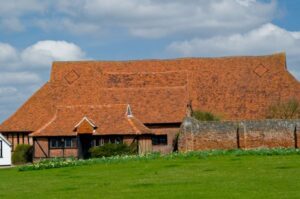
One of the two ancient barns at Cressing Temple....The Barley Barn (English Heritage listing 1123865) is an early thirteenth century (c. 1220)[6] barn modified in later centuries,[5] and is the oldest standing timber-framed barn in the world.[3][5] The roof was originally tiled, and would have weighed close to 70 tonnes.[9] 'Lozenge' shape on roof?

Spiral 'ascension' within the 'tumulus' that became known as Pot Belly Hill? Denderah and 'Bread basket' to enlarge.
The structure dates to the Korakou culture, also known as the Early Helladic II period (2500–2300 BC) and is sometimes interpreted as the dwelling of an elite member of the community, a proto-palace, or an administrative center. Alternatively, it has also been considered to be a communal structure, i.e., the common property of the townspeople.[6] The exact function remains unknown due to a lack of small finds indicating the specific uses of the building.[6] The house had a stairway leading to a second story and was protected by a tiled roof;[7] it also contained storage areas.[8] Debris found at the site contained thousands of terracotta tiles having fallen from the roof.[9] Although such roofs were also found in the Early Helladic site of Akovitika[10] and later in the Mycenaean towns of Gla and Midea,[11] they only became common in Greek architecture in the 7th century BC.[12] The walls of the "House of the Tiles" were constructed with sun-dried bricks on stone socles.[2]
Carbon-14 dating indicates that the House of the Tiles was finally destroyed by fire in the 22nd century BC.[9] Not long after the destruction, the place was cleared in such a way as to leave a low tumulus over the site.[9]........structure of the tumulus built during the Early Helladic III period over the ruins of the House of the Tiles indicates a "showing of respect for their predecessors that one would not expect of invaders of a different culture."[14]
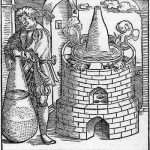
Brick-kiln?
CONTINUED: [14] Then came the word of the Lord to Jeremiah in Tahpanhes, saying: Take great stones in thine hand {'Elephantine'?} and hide them in the CLAY in the brickkiln, which is at the entry of Pharaohs 'house'...in the sight of the men of Judah {'Higher' of the lower aspect?}, and say unto them: Thus said the Lord of Hosts, the god of Israel; Behold i will send Nebuchadrezzar the king of Babylon, my servant, and will set his throne upon these stones that i have hid; and he shall spread his royal pavilion over them.'' [Jeremiah 43:8-10].
''The following persons are called הוהי דבע (“the servant of the Lord”) in the Hebrew Bible: Abraham, Ahijah, David, Elijah, Eliakim, Isaac, Jacob, Isaiah, Job, Jonah, Caleb, Mo ses, Nebuchadnezzar and Zerubbabel....Jeremiah believed that Nebuchadrezzar was "God's servant" (Jer. 25:29) who had been raised up to chastise Judah for her sins. He urged the kings of Judah to act as Nebuchadrezzar's loyal vassals rather than to seek independence or cooperation with Egypt against Babylonian hegemony.''
'Prison{er'} to enlarge.
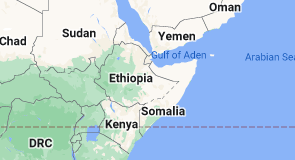 The Tabernacle is a house of worship. specifically : a large building or tent used for evangelistic services. : a receptacle for the consecrated elements of the Eucharist. especially : an ornamental locked box used for reserving the Communion hosts.
The Tabernacle is a house of worship. specifically : a large building or tent used for evangelistic services. : a receptacle for the consecrated elements of the Eucharist. especially : an ornamental locked box used for reserving the Communion hosts.
''Shadow'' to enlarge. 'Sunshade'?
And/or: ''And David {'Beloved'} spoke: ''The Lord is my rock, and my fortress, and my deliverer. The god of my rock...he is my shield, and the HORN of my salvation {''strength''}, my HIGH TOWER {''stronghold''}, and my refuge.'' [2 Samuel 22: 1-4].
Tower of the Fish?
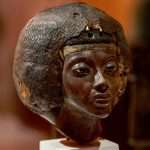
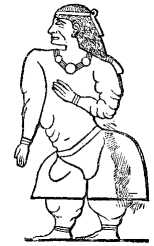
'Fat' of the land? And/or: ''Eightyeight = Two fat ladies.''
Something hinted at: ''Interestingly Heliodorus also reports there was a similar well at Memphis. And it is to the Memphite-Heliopolitan region, rather than to Aswan far way in the southernmost part of Upper Egypt, that we should locate the Brooklyn Papyrus's complex New Year ritual....In all likelihood they would have been performed in the NORTH of Memphis or Heliopolis....incorporating a robing and 'anointing' chamber....also have needed a spacious court with shrines on the EAST AND WEST side and a throne dais, perhaps a pavilion standing on a platform {sledge/pallet?} - and approached by steps. It would also REQUIRE a special 'tomb' chamber with a bed for the Osirion 'sealing' rites close to a court with shrines on the NORTH AND SOUTH. There is also another conundrum here. For, despite the fact that Re communes with his 'female guide' about the wondrous union of high heaven and deep earth, we have rarely referred to the participation of any priestess or royal women in the actual New Year ceremonies. How so? After all, it is the serpent Eye Goddess who empowers the Horus king throughout.'' [Page 65/6 'Egypt's Anointing Mysteries' / A. Roberts].
'Mountains low, valley's high'?
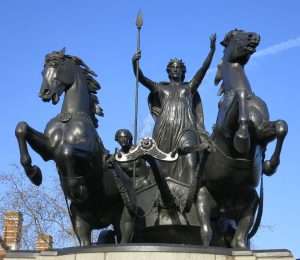
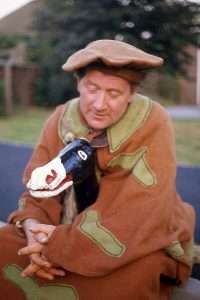
Flat cap? 'Asleep'? To be awakened?
And/or: "If Pilate did have a house here he would have had a place to keep prisoners. The Greek Orthodox call this place the western extension of the Lithostrotos. We are down {'three' levels} at the street level where Christ would have walked. This is where they found a prison deep underground {'covered'}. Which they now call the Prison of Christ. So Christ could have been in here with Barabbas awaiting to be taken out, across the Lithostrotos - that paved courtyard - before they were judged on Gabbatha. 'Gabbatha' means like a mosaic pavement, a raised dais in a way...." [Day 10. Second Station. Pilgrimage of Lent: The Way of the Cross. Magdala. 2024].
'Tessellated'?
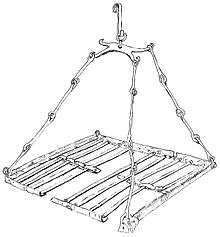
Twentysix links.
N.B. A picture can be seen within the confines of the prison area where Christ is sat within a sarcophagus {red attire over left shoulder}, feet exposed through a cut-out at the bottom that are chained. One angel either side of him. Three bowl depressions {cup marks?} can be seen in front. All the above on a raised ledge/bench.
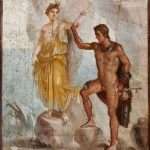 Gabbatha (Aramaic גבתא) is the Aramaic name of a place in Jerusalem that is also referred to by the Greek name of Lithostrōtos (Greek λιθόστρωτος). It is recorded in the gospels to be the place of the trial of Jesus before his crucifixion c. 30/33 AD. The site of the Church of Ecce Homo is traditionally thought to be its location, but archaeological investigation has proven this unlikely. Herod's Palace is a more likely location. Lithostrōtos (lit. 'stone pavement', from lithos ‘stone’ and strōtos στρωτός ‘covered’)[1] occurs in the Bible only once, in John 19:13.[2][3] It states that Pontius Pilate: brought Jesus forth, and sat down in the judgment seat, in the place that is called Lithostrotos, and in Hebrew Gabbatha.
Gabbatha (Aramaic גבתא) is the Aramaic name of a place in Jerusalem that is also referred to by the Greek name of Lithostrōtos (Greek λιθόστρωτος). It is recorded in the gospels to be the place of the trial of Jesus before his crucifixion c. 30/33 AD. The site of the Church of Ecce Homo is traditionally thought to be its location, but archaeological investigation has proven this unlikely. Herod's Palace is a more likely location. Lithostrōtos (lit. 'stone pavement', from lithos ‘stone’ and strōtos στρωτός ‘covered’)[1] occurs in the Bible only once, in John 19:13.[2][3] It states that Pontius Pilate: brought Jesus forth, and sat down in the judgment seat, in the place that is called Lithostrotos, and in Hebrew Gabbatha.
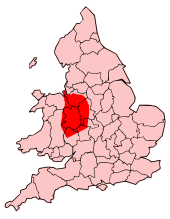
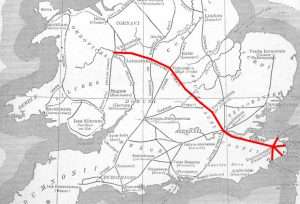 The name "Gabbatha" is an Aramaic word, the language spoken commonly at the time in Judea. It is not a mere translation of Lithostrotos, which properly means the tessellated or mosaic pavement where the judgment-seat stood, but which was extended to the place itself in front of Pilate's praetorium, where that pavement was laid. This was proved by the practice of St. John, who elsewhere gives Aramaic names as distinctly belonging to places, not as mere translations of the Greek. This is proved also because Gabbatha is derived from a root meaning 'back' or 'elevation' – which refers not to the kind of pavement, but to the elevation of the place in question. It thus appears that the two names "Lithostrotos" and "Gabbatha" were due to different characteristics of the spot where Pilate condemned Jesus to death. The Aramaic name was derived from the configuration of that spot, with the Greek name derived from the nature of its pavement."
The name "Gabbatha" is an Aramaic word, the language spoken commonly at the time in Judea. It is not a mere translation of Lithostrotos, which properly means the tessellated or mosaic pavement where the judgment-seat stood, but which was extended to the place itself in front of Pilate's praetorium, where that pavement was laid. This was proved by the practice of St. John, who elsewhere gives Aramaic names as distinctly belonging to places, not as mere translations of the Greek. This is proved also because Gabbatha is derived from a root meaning 'back' or 'elevation' – which refers not to the kind of pavement, but to the elevation of the place in question. It thus appears that the two names "Lithostrotos" and "Gabbatha" were due to different characteristics of the spot where Pilate condemned Jesus to death. The Aramaic name was derived from the configuration of that spot, with the Greek name derived from the nature of its pavement."
Side note: Pie {Pi} is celebrated annually on the fourteenth of March.'' ['Tipping Point' / ITV / S.9 E.77].
And/or: A tessellation or tiling is the covering of a surface, often a plane, using one or more geometric shapes, called tiles, with no overlaps and no gaps. In mathematics, tessellation can be generalized to higher dimensions and a variety of geometries.
Added / Subtracted.
N.B. Noah's Ark made of reeds. A great big circular one - in the shape of a coracle. ['The Unexplained With William Shatner: The Search for the Ark of the Covenant' / August 2022].
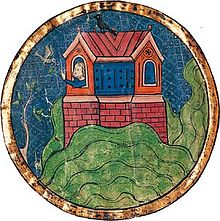 And/or: ''How long such a well has been at Syene we do not know, though ancient Nilometers are found throughout Egypt for measuring the ''ebb and flow'' of its waters, on which all life depend...Classical authors must have had in mind this famous well into which, at midday {zenith?} on the summer solstice, the suns rays descended perpendicular - illuminating the depths of the well - and casting no shadow, thus proving that Syene was UNDER the tropic. Curiously, it was in connection with this Aswan phenomenon that Eratosthenes, keeper of the great library at Alexandria discovered his famous method for the circumference of the earth.'' [Same book].
And/or: ''How long such a well has been at Syene we do not know, though ancient Nilometers are found throughout Egypt for measuring the ''ebb and flow'' of its waters, on which all life depend...Classical authors must have had in mind this famous well into which, at midday {zenith?} on the summer solstice, the suns rays descended perpendicular - illuminating the depths of the well - and casting no shadow, thus proving that Syene was UNDER the tropic. Curiously, it was in connection with this Aswan phenomenon that Eratosthenes, keeper of the great library at Alexandria discovered his famous method for the circumference of the earth.'' [Same book].
'Feast of the Valley'?
